

ART
HA B E N S
Holly Marie Armishaw Canada
Repressions embodies a unique approach to the formal qualities of the photographic medium while simultaneously provoking sociopolitical discussion. Each of the photographs in the series depicts a partial view of a woman either releasing various objects, or interacting directly with the frame. The white exhibition frames are no mere formal devices, but active participants in the minor performances of the artworks. The treatment of the frames, and the subject’s engagement with the surfaces of the photographs, connote a consciousness of the invisible confines of the medium. Viewed collectively, one is able to piece together a unifying thematic thread. Three of the works contain pills, which are used to treat pain, anxiety, and depression. Other objects like eggshells and flower petals may suggest a sense of fragility or sensitivity while being intuitively linked to the idea of the feminine, as does the text rendered in nail lacquer. The more “active” works suggest states of struggle, desperation, isolation, and even anger. Evidently, there is more to this series of work than a critique on the 2D tradition of the photographic medium. In a National Population Health Survey conducted between 1994/95 to 2010/11 Statistics Canada reported nearly twice the incidence of childhood abuse in female than male subjects. In 2014 Statistics Canada reported that women constituted approximately 65% of all Canadians with mood disorders. Numerous studies have documented associations between childhood physical abuse and subsequent mental and physical disorders.

Marcelina Wellmer Poland / Germany

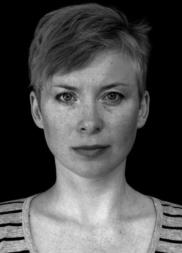
The work “Dust” combines generative HD video with the movement of the audience through camera tracking. Since some months I am collecting dust particles on a piece of black plexiglass. Monthly, I photograph the collected set, clean the surface and start from the beginning. The composition and the quantity of dust depend on the movement around the place and other random occurrences. One of the photographed sets I traced in a graphic program, the resulting graphical particles now get animated within the generative video software VVVV. A Kinetic 3D camera tracks the movement in front of the video projection – if somebody gets closer to the projection the dust speeds up and flies into all directions, triggered by the observers motion. The movement of the pixel dust, although looking random, is based on close observations of real dust flying. A complex power field emulates the forces that also appear in real life. The composition is never the same; it happens in real time and by chance – it is a generative chaos. The observers movement is interpreted as an artificial wind source. We humans disturb the dust and let it fly faster. We are a source of wind and motion. Our bodies are now a part of a random, digital artefact, but with roots in real occurrences. The second part of the project are paintings: the photographed dust is painted on canvas and becomes the name of the month – every month one painting. It will be a one year of dust.
Cooke Australia

I am an interdisciplinary scholar and media artist. In one way or another, all my work, as both a scholar and a media artist, is concerned with archives; with personal, collective and environmental archives; with the archive as a touchstone for the re-enchantment of the past; and with the archive as a material thing, the thing by which we can state that history and temporality have a medium. As individuals and societies we accumulate a great deal of “stuff” in archives. The materials that sit in our national archives and museums, for example, are vital to our identity as a people, just as our own individual archives of photographs and memorabilia are important to us personally, they form a kind of material memory. But material memory operates beyond the human as well; the “deep time” of the earth is present in our forest, reefs and mountains, which represent a form of sedimentary and environmental memory that performs a vital de-centering of human concerns. In my work I explore these archives as an opportunity for thinking differently. I am concerned with finding new ways of relating to archives as material forms, ways that might change how we think about ourselves as individuals and nations, and our place in a world that is increasingly subject to our collective technological and economic will.
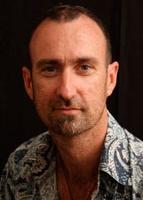 Sonia GIl Brazil
Sonia GIl Brazil

I am an artist and an architect from Rio de Janeiro. My work is focused on cities and on the urban universe, an old passion, that lead me to study Architecture and Urbanism. Along my graduation years, I started to give form to my artistic expression, and gradually, after working as an architect for many years, the art experience became more and more important, so eventually, I landed in the arts for a full time experience. However, the architectural mind is still present, as I try to capture the spirit of the contemporary city, and build, in various layers, images of the transforming urban space. I started with watercolors and moved on to painting, and then moved on to digital. I moved back to watercolor and started to blend in the digitalized paintings with photographs. My lattest works use the re-treatment of images, mixing paintings, photographs and digital, in a process that starts with brush and paint and ends with scanning and digital collage. Working with a diversity of techniques, and mixing different elements is my way of trying to translate the complexity of the contemporary life and the urban environment. Art to me is a process, a very unsettling one.
I am also co-founder of the Urban Dialogues group, an network of artists from different cities, working with the idea of sharing, collaborating, constructing and reconstructing images of the urban landscape, in search of learning and reflecting about our differences and similarities.
Ferenc Flamm Hungary/ United Kingdom


Ferenc Flamm grew up in Budapest and from an early age fell in love with art, music and dance. His interest continued to mature during his education at The Art College of Budapest and The Hugari- an Academy of Fine Arts, where he closely studied anatomy and movement through the legacy of Leonardo da Vinci and many other great classical masters. In 1976 Ferenc moved to Sweden, married and formed a family, while at the same time finding his feet as a graphic designer and fine artist. Over the past 15 years, he has returned increasingly to his artistic roots; painting portraits, commissions and accomplishing his own art projects. His work has been displayed in art galleries on the Broadway, in Soho and at the City Hall in New York, at the U.S. Congress on Capitol Hill in Washington D.C., in Orlando and Fort Lauderdale in Florida, at the Morton H. Meyerson Symphony Center in Dallas and in Long Island. He participated in an exhibition at the Mall Galleries, London, and had solo exhibition at the Balint House in Budapest, in Stockholm, Lund and also at the Palace House and the Concert Hall of Gothenburg. During the past year Ferenc has started to focus on one of his favorite themes; the performing arts; ballet and music. He often visited the rehearsals at the Gothenburg Opera, the Ballet Academy and The Gothenburg Symphony Orchestra at the Concert Hall. He made studies, sketches and took photographs in order to create a visual journey into the world of stage arts, particularly to portray the work behind a stage performance.
Manifesting itself in many different ways my work hovers between notions of installation, the sculptural and the participatory. It evolves out of a core relationship with listening as a critical practice, and sound as a physical, spatial and tangible material. While my practice is predominantly sound based, it is consistently informed by a visual art history and context. When exhibited, the work straddles a range of intersecting formal, spatial, sonic and art historical interests. Combining multiple recording methodologies, alongside contemporary audio technologies, my practice draws out the relatively silent and various histories of soundmaking and listening.
As my practice increasingly puts more trust in the invisible, possible worlds of the ‘sonic’ I do not intend for it to be a call for anti-materialism or antirealism, quite the contrary. In its shadow-less world, it occupies real space, and has the ability to be as brutally present as any visual material/object, or as quietly unobtrusive as the image. For me, it’s not a material of clarity or purity, but of the gritty, mucky substances of being.


I worked for a decade as a singer, songwriter, and musician. One artistic/technological project I developed and managed for several years back then was a phone machine and service that I called Phonesong. (At first, actually, I called it Phonestonesong, but I soon decided that was a bit weedy.) It allowed people to call and listen to my songs, which I changed each week. It got some media attention in Boston, and some around the U.S., and for a while received 15,000 calls a year.

SQUEEZESHOT is a successor to that. I think that in all our lives there is a degree of synesthesia at work, each of our senses impacting the others. In a more or less subtle way, we hear what we see, see what we hear, verbalize to ourselves what we think and feel, think and feel what we verbalize, and so on. About anything that we experience, our perception and consciousness speak to us in one voice and, at the same time, in many voices at once. They sing to us solo and in chorus, in our own voice(s) and in the voice(s) that we hear around us—the music of our spheres. Not that there aren’t differences between how sound and vision communicate to us, and in how we use them to communicate, but there’s also that commonality. The two entwine with each other, and enhance each other, enlarging our experience.
I once attended, decades ago, a rather large celebration marking the end of another school year, at a lovely, bucolic farm a few miles outside my hometown of Middleton, Wisconsin. While I had indulged in nothing more dramatic than cheap beer, I was especially intoxicated by the dawn of another summer vDance photography opened up to me when I discovered contemporary dance. I attended a studio showing and immediately fell in love with what I experiencedphysical touch and encounter, moments of ephemeral beauty, new territory to explore and dive into. In the beginning I documented dance on stage or in reherarsals and felt connected to the performers, breathing and moving with them in sync. At some point though, I lost interested in dance photography, it didn't touch me the same way it did initially. I became more aware of the person behind the performer, the inner story, and less of the style of a certain move. Back then I was a contemporary dance student myself and discovered Butoh, an avant- garde performance art in postwar Japan. I had a truly inspiring teacher, Ko Murobushi, and learned to see and to witness the unseen, to go beyond shape and judgment, to experience my body as a landscape and my senses as a whole, including all that cultural upbringing had closed off in early days.

John Cage wrote in his Lectures on Something and Nothing that "[...] the important questions are answered by not liking only but disliking and accepting equally what one likes and dislikes. Otherwise there is no access to the dark night of the soul."
I got my first set of oil paints when I was about 10 years old and started to learn how to paint with them. Later I went to study painting in art school, but I was curios to learn other techniques like sculpture and photography too. My way of self expression has always been the visual kind. The process of starting a new project always begins with an idea. Sometimes ideas come to me easily and almost fully developed, but often it can take some time and I just have to wait while the ideas slowly develop in my mind. After getting the idea the rest is trying to execute it. The end result can be different from what I was planning at first, the work processes are variable and I want to leave room for surprises and chances. I often have many projects running simultaneously. I'm a bit impatient person, so hopping from photography to oil painting or making a short film suits me. Sometimes I wish I would be interested in one thing only, in example painting or photography, so I could really concentrate to that technique, but I find so many things interesting and get easily inspired. If I don't get to finish a project efficiently and in a reasonable time frame, I have a bad habit of never finishing it. The moment has gone and I have already moved on to other fresher ideas.
Special thanks to: Charlotte Seegers, Martin Gantman, Krzysztof Kaczmar, Tracey Snelling, Nicolas Vionnet, Genevieve Favre Petroff, Christopher Marsh, Adam Popli, Marilyn Wylder, Marya Vyrra, Gemma Pepper, Maria Osuna, Hannah Hiaseen and Scarlett Bowman, Yelena York Tonoyan, Edgar Askelovic, Kelsey Sheaffer and Robert Gschwantner.
Lives and works in Berlin, Germany


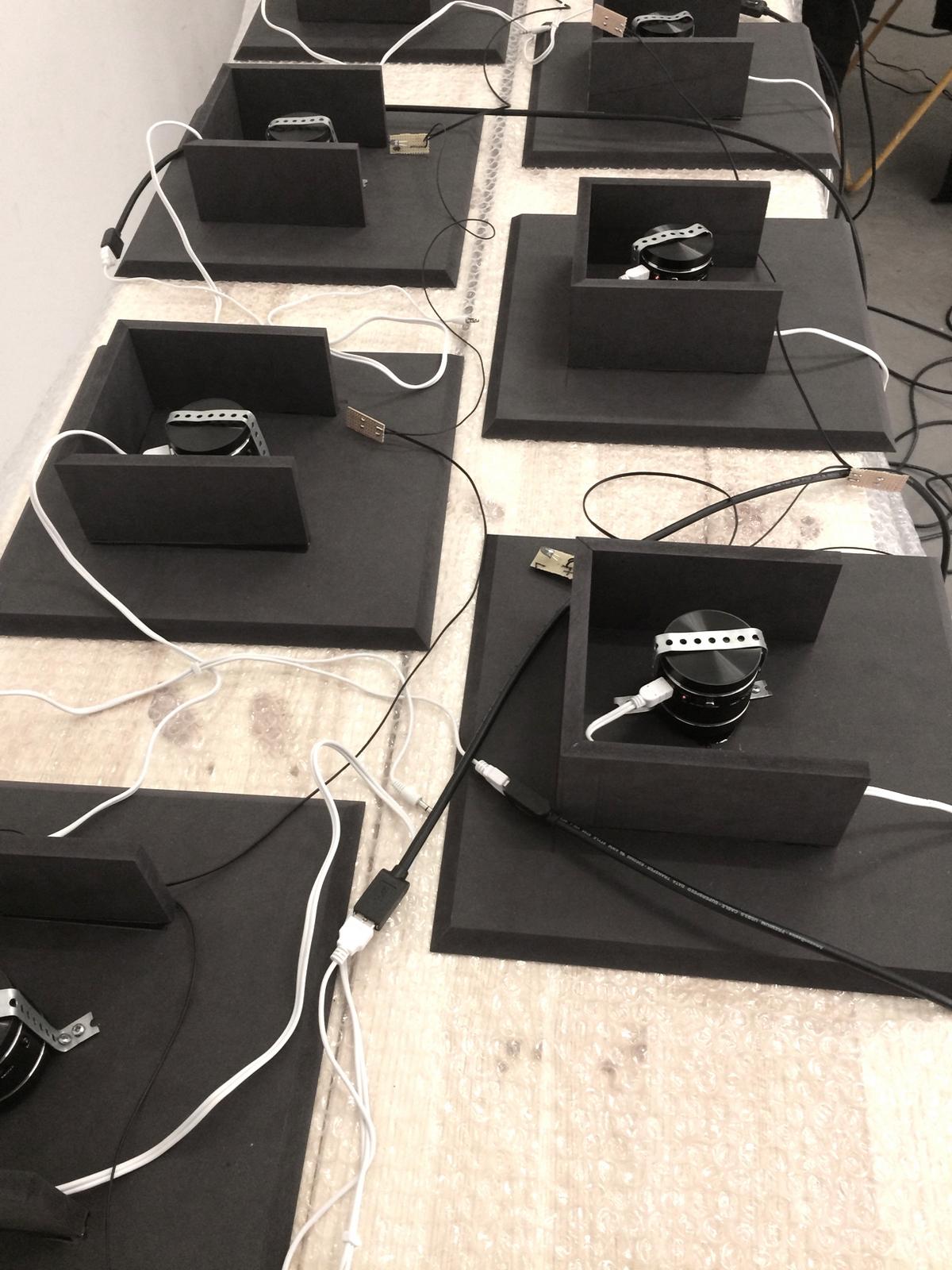
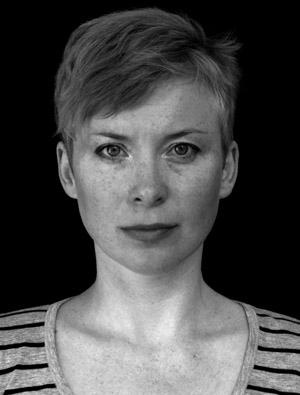
My multidisciplinary education is an important aspect of my work. Already during my studies, I recognized that I’m interested in mixing analog and digital techniques, and in general in intermediality. Every technique brings another range of topics/aesthetics and another potentiality for expression. But the free switching and mixing between media came slowly with time. I am a child of the times “before the digital revolution,” which is also a reason why I like to move between these two worlds. It’s quite natural for me.
When I think about my Polish background, I’m reminded firstly of the transformative times
Marcelina Wellmer is operating at the edge of video, installation and painting. Her works are dealing with the relation of humans and with the interference of information and media, crossing the border from analog to digital and vice versa. Part of her creation is to play with those edges of media and to amplify their very own characteristics. Wellmer reuses lost and recovered data files and IT hardware. She also use randomness as a important key element of creation. In an erroneous process of encoding and decoding, new perspectives get revealed. Her works were showed in several exhibitions in Europa, Australia, Canada, USA and Japan.
Marcelina Wellmerduring my artistic education. When I studied in the 90s, my academy was some years behind the latest trends, but still there was always a strong connection to Germany. The actions and presentations of internationally famous artists like Fluxus, for example, in the Akumulator Gallery in Poznan, were still truly present. And many of us saw Beuys as the true master.
Thinking about my Polish roots and aesthetic I think in general Poland still has a problem of “form.” As Gombrowicz, our famous writer once said, “I want to live there, where a human is a manufacturer of the form, not its slave.” He emigrated. The aesthetic in Poland was, for me at that time, something still influenced by the romantic tradition and temporary politics, not especially hot or cold, just lukewarm not defined enough. I always knew that I wanted to speak a strong, cold, minimalistic language and build very defined forms. And here inspirations from contemporary German culture, especially the music scene connected to techno, new wave, and electro, were decisive for me. Let’s say I was always a fan of Kraftwerk.
I don’t know if a medium can exhaust itself in general, but I know for me, and that’s very personal, at some point in time my medium was in fact exhausted. At that moment during my studies, when I was painting large format and had presented paintings at Mil-Art Gallery and the


Scanned_Image / detail / 2015

Polish National Bank in Poznan, I got the feeling that it was too easy a way for me to do art. I thought, I have to learn many more techniques that will give me more possibilities for expressing my ideas. This is a very individual thing. Many people can go very deep into one medium, and they can find there very interesting things and tell interesting stories. But I was interested in trying everything possible. It was only later, as I suggested, that I started to mix different techniques to find new ways of expressing my ideas.
I was always interested in many kinds of dimensionality. My mother is a sculptor, and as a child I already played around building some “sculptures.” Later on, I acted some years in off-scene theaters in Poland and Scotland, and I saw how great it is to work with the mixing of light, music, and space. I was also interested in literature, philosophical and spiritual ideas, and with time those multi-/interdisciplinary circuits brought me to a kind of conceptual thinking. So yes, in my case, it’s clear that the whole lifeexperience construction brought me to this way of dealing with media.
Let’s say there are different processes for different works, but yes, some points in the process apply to each other. Mostly, the work starts from one thought which is inspired by a device, or by phenomena that I observe generally in the world. For this work, it was a device, a scanner. I was scanning, like many people commonly do, a lot of paper. In the darkness, I always admired its minimalistic light. So I wanted to do something with it, because it was beautiful for me. First, I started to



experiment with scanning some pieces of mirror and reflecting the scanner light, then with a desk lamp.

These experiments were a base for my painting series, Scanned_Image-paintings. Later, I came to the conclusion that instead of the lamp I wanted to use another scanner’s light it’s useful for making an autonomous circuit. I wanted to avoid a human aspect and talk about the life of machines, mirroring a medium in a medium. Then I started to think about broadening the circuit. On my desk at home, I already had a printer, computer, screen, and some other devices. I recognized that it’s interesting to work with everyday stuff, my closest environment that I’m dependent on.
I started thinking about this parallel to the fact of producing and consuming endless amounts of images in our times, technical dependency, social disconnection, processes that we cannot stop, and so on. Always at that point, I start to check and play with the aesthetical borders and characteristics of the media I use. So the process is, let’s say, to explore the own nature of things and their borders and from those facts come further questions and ideas. The work goes on to become extensions in the case of Scanned_Image, for example, a human being is involved in the process. A person who is shredding the scanned/printed image is just the last span in that mechanical circuit. Most visitors shred the print; they don’t take it with them (which is allowed). I think it’s because of the fact that the machine, in this case a shredder, is just there. It’s a provocation to use it. And to check what happens in the end what is the human behavior in reaction to the machines is also part of the process.

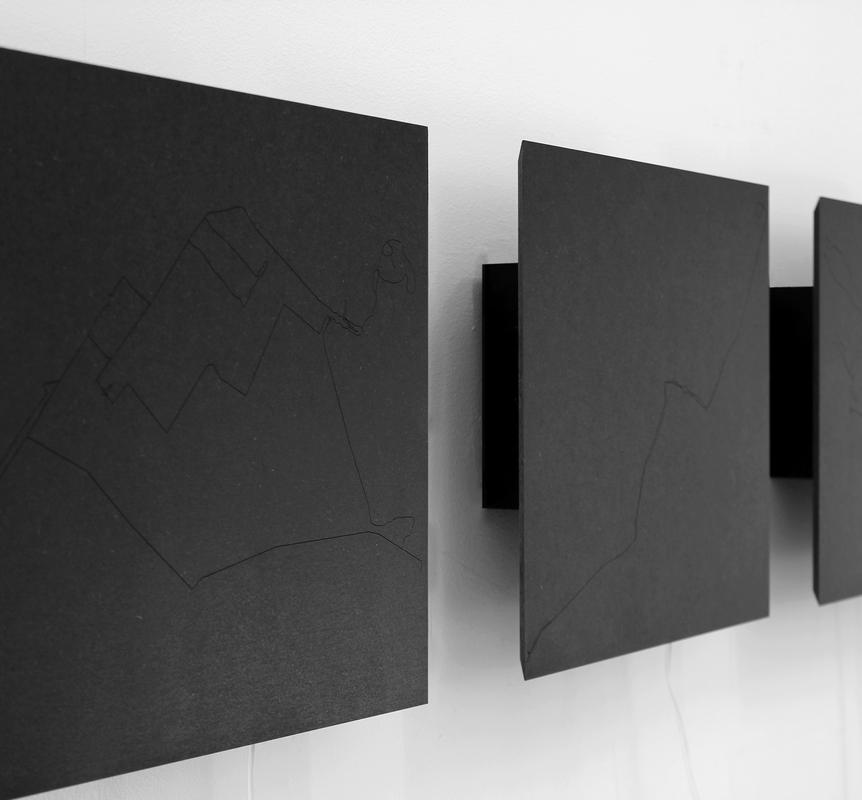
I think every kind of new technology can widen our thinking and broaden the horizons of art. For me personally technology makes it possible to experiment with a bigger range of topics and aesthetics. But anyway, there is no need to fetishize technology. We have to think about why we want to use this or that medium or technology, and it’s hopefully not because this is the new, cool trend.
In general, art and technology are already assimilated. That’s why we talk now about postdigital times. But there will always be gaps, transitions, the way forward is going there and back and around the corner between art and technology. The presence of technology started already with photography, mechanical music, and moving images. Dada, later kinetic art, and many other art movements they were all using technology in a playful way. Every new technology brings us a different kind of aesthetics. It’s good to hear what the medium wants to say to us about itself; every medium has a very strong “character.” The medium wants to give us suggestions, sometimes influence us strongly, but still, I believe, it’s good to stay the main scriptwriter. Otherwise, the medium mutates into a fetish, and we are dependent on it. Personally, I’m interested in figures of thoughts that are inspired by technology.
Another topic is the coherence between the ubiquity of technology and art. That’s the other side. Technology makes it possible to produce endless pieces of art: millions of copies of movies or digital prints, videos, even every installation can be rebuilt without artist participation. It’s enough to have a good digital project, and some companies will produce your artwork, and then exactly the same one again for another customer. Actually, if you use a lot of advanced technology as an artist, you are required to use the help of professionals. These processes are getting very commercial, so that’s why I think critical reflection about technology in art is also really needed. It’s not only about mass media, but also about mass art. I think the process of emergence is exactly as important as the final effect. Not only the end statement matters but also the way to it.
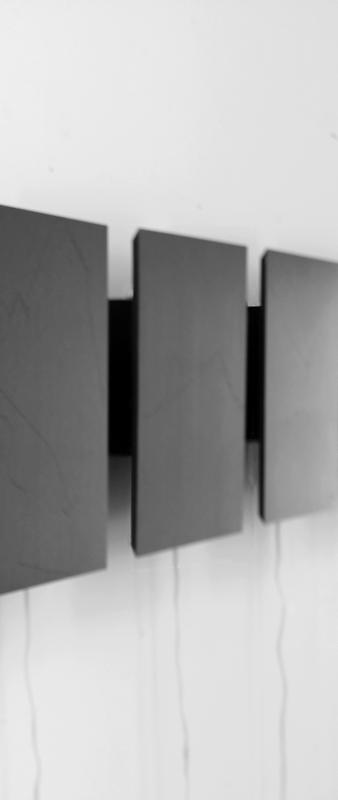
For me, everything around me is environment: my studio, the technical devices that I use, the internet, and public space inside and outside. This all has some visible and hidden structure, some visible and hidden patterns and errors. I like to analyze it and translate it into artworks.

I can say that with time I’m more interested in one of these environmental blocks, the socalled public sphere. It’s a really wide idea. Here I have my very own, private philosophy. I’m not especially interested in leaving material traces in public space. The city is an artwork by itself. The whole construction, the whole dependencies, unexpected occurrences. It is a mechanism with an interior composition, depending on the city, it reminds me of different moments in art history, like impressionism, constructivism, futurism, pop art, Arte Povera.
To be interested in the attributes of public space doesn’t automatically mean for me to “install” a durational artwork there. There are of course some good examples of “public art” but a lot of tragic ones too, because it’s mostly custom-made the aesthetic is deeply connected to the fact that those artworks are custom-built, as if “ordered,” for example, by a city government. I personally most admire performative actions in the public sphere which break/brake the daily cycle. The ephemerality of these actions respond for me in a good way with the character of the public sphere. That’s


why I’m very into all Fluxus-like action. It’s really invigorating!

Sometimes the differences between cities are not so obvious. That’s why it’s good to use some tools to find the “sound” and “composition” of the place. In Berlin and Warsaw, I used GPS and sound recordings to check the differences in the hidden patterns. That was the base for my work 52.5200 ° N, 13.4050 ° E 52.2297 ° N, 21.0122 ° E31.08. And also, the body moving in public space is something special and different for me, almost as if I were in the studio making an artwork. That was a new experience the first time in years I had a really good feeling due to moving around in the outside place I was fully aware of my own body and the path I was passing at that very moment. It was without any rush, and this special attention and observation put me in a very good mood.
I think the role of an artist has changed throughout the course of history. I don’t think that media are changing the role of the artist, but they are changing the artistic process of course. In general, technology is changing history, our surroundings, and us all.
But yes, through this intensity of global communication we can think and talk about phenomena in a different way, and that richness is bringing more possibilities for recontextualization. The context is getting bigger, and so is the recontextualization. But those artistic practices started already at the beginning of the 20th century with Dada, Duchamp, later pop art. We are all the heirs of this.
When we think about the role of the artist in art history, we see many different roles throughout time, and most of them weren’t really freely chosen by the artist. There are always some institutions, politics, important persons, other dependencies behind it. And they often decide if it’s the time for moralistic admonitions, social visionaries, social critics, pleasure givers, or some “individuality” preachers. Now we live in global times and we have all these roles at the same time, depending upon which part of the world we live in this or that role is still more or less preferable. Important institutions, curators, art dealers, have their own preferences and visions. I think we should be very careful about it. Dependencies are the ongoing companion for most artists in history, as well as now, and it’s good to stay attentive about it. But there are still some generally positive paths throughout art history connected to the role of the artist like stimulating sensitivities, shedding light on hidden aspects of life/the world, and looking for new visual forms which are connected to contemporary times. Today, in times of globalized information, some artists understand their role as moral stimulators, but I’m far from this kind of romantic thinking.

Here, I’d like to say a few words about the category of new media actually, it’s not really useful. New technologies appear every day, companies work hard to bring more “happiness” and “fun” into our lives. The results of these efforts influence us constantly. We are running behind this process. All that was new yesterday is old today; that’s how capitalism works. Arduino, Raspberry Pi, sensors, simple coding that’s already daily stuff for Western artists. The generation of digital natives is already growing.
I think we really have to pay attention now, to ask ourselves about the sense of using all these technologies that are often coming from not really ecological or responsible sources. And also what kind of images do we produce, what is their influence on the world? I’ve asked myself these questions often in recent times, and they will influence more and more my


artistic process. The time of technology’s innocent childhood is surely behind us. I feel like switching into post-materialism, new simplicity, new intimacy important aspects for me. That will be my very personal “new sensibility.”
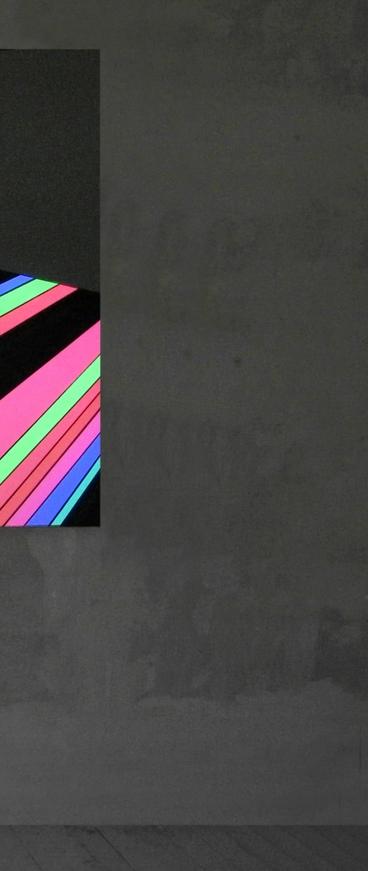
Yes, I believe that this kind of pseudorandomness that I use in DUST and some other works these unexpected, surprising behaviours is giving much greater freedom to perceive the work, and any kind of freedom gives you more possibilities to search for meanings. It also helps to rethink our expectation for the artwork and, in general, our sensation. We are scared about unpredictable behaviours. Randomness is for me something that makes the piece more “alive.” We cannot say exactly what the future will bring us, even if we plan everything out in a precise way. There is still a huge amount of randomness. And that’s why I like to use it; it feels to me much more “natural.” I put some general schematics there. Everything around us has some schema; you can’t get away from this. But then inside the schema things still happen within some degree of freedom.
I have to explain shortly why I’m talking about pseudo-randomness. Some rules always have to be written down, like a range of speed, a kind of movement, colors, a space to move. There are always some parameters, just like in our everyday physical world. Actually, my work Error 404 502 410 is the closest to pure randomness, yet not 100% of the way there. The arm of the hard disc stops when the device gets tired of looking for the right position on the disc to start some proper process of reading data. The stop never happens at exactly the same moment. It’s
like roulette. There are no coded parameters: this process is dependent on the physical distortion of the disk. The laser-etched numbers stop the arm. But here a physicist would say: there are some rules as to why it happens at exactly this moment; there is a mathematical pattern. It’s just us laypeople who don’t see and understand this. So after researching randomness through my works, I’ve come to recognize that pure randomness doesn’t exist in our physical world of big objects. As I read, some mathematicians have the same opinion that randomness doesn’t exist at all. It’s also possible that in quantum physics randomness is an illusion just because we don’t understand the physics of very small objects. Anyway, my works are far away from those kinds of small objects, so here the rules are clear: this is a pseudo-randomness similar to a pseudo-random number generator.
Through my works, I look for patterns hidden behind the surface of reality, and I believe that sharing these observations in an interesting way can stimulate a dialog with the audience. We all share the same environment, but we see things in different ways. I talk a lot with people during my exhibitions, festivals, and I like to hear their reflections and opinions. It was very interesting to hear that Scanned_Image is talking about “birth and death,” or, “It’s so useless, like my daily work,” and similar things. It’s important for me to


communicate my perspectives in a formal, well done, and understandably clear way, so that the audience can stay interested enough to come to their own conclusions and hopefully start a conversation about how they perceive the contemporary world.
There is a series of works titled RGB, which is even more directly oriented toward a dialog with the viewer. In these works, video with a randomness factor is projected on acrylic paintings. At first glance it’s impossible to recognize what’s happening on the surface. The video mapping is very exact, and the three main light colors red, green, and blue fade into each other very slowly. Everybody expects to catch when the change happens, but it’s not possible. It’s too slow for the eye-brain construct. Only when the viewer is momentarily not watching the piece and then looks back at it can they see the change. People are surprised by their own perception and want to catch the moment with all their might. Here, involving audience expectations was very clear from my side.
Another experience with audiences is that many people want to understand exactly what happens and what is the “right” sense of the work. But understanding how it works is not equal to understanding the “right” meaning. There is no “right” meaning at all. I hope that its interpretation is endless. Some viewers are even irritated if they don’t understand immediately how the work “works.” Here, Scanned_Image is exemplary. In Augsburg at the LAB30 Festival, after the second day of the exhibition, somebody disrupted the piece! Part of the hardware was messed up, and the papers and the shredded waste spread all over the room. It looked like somebody got really angry with it all! Another time, somebody jumped on Missing Files, which was lying down on the floor in the communal gallery weisser elephant in Berlin. I understood this also as a kind of protest. So it’s good to be careful what kind of nonunderstandable experience you serve to the public. But joking aside, I always want the audience to be able to participate with two experiences: the intellectual and the aesthetical,
feeling free to interpret without asking me what it’s all about. And yes, I hope the pseudorandomness helps to keep the work more open.
I think I will continue to, and even more intensely, exercise this complicated figure between simplicity and complexity. The ecological and post-materialist aspect connected to some very local specifications will be more present in my work. But I will still use intermediality and analog-digital translation. My work will more and more show the circuit of emergence, disruption, and dissolution, and use the connections of objects to talk about processes and ideas.
After traveling to Japan this year, I’ve got many inspirations for new ways of mixing digital and analog phenomena, and also touch through a clash between handmade materials/objects and mass media technological ready-mades. I want to for sure spend some more time in Japan this year. The concentrated, focused atmosphere connected with amazingly strange contrasts between things inspires me a lot. Also, the Japanese way of mixing analog and digital ways of living is very interesting. But at this moment, I have to do some contemporary stuff, like preparing Scanned_Image for a show in Spektrum Media Art Center in Berlin [http://spektrumberlin.de/home.html], and I’m working until summer on video material that’s dedicated to experimental music from China. Soon, I’m leaving Berlin to work there with with Chinese musicians and play a show in Beijing. I’m sure I will get a lot of new, exciting inspirations there. I will leave the process running and let myself be surprised by the hidden nature of things.
Thank you!
An interview by , curator and curator
 Warsaw-Berlin residency at TU foundation exhibition montage / Warsaw 2016
Warsaw-Berlin residency at TU foundation exhibition montage / Warsaw 2016
Play it by Ear, Installation View, 2015
Image courtesy of Artist

Lives and works in Dublin, Ireland

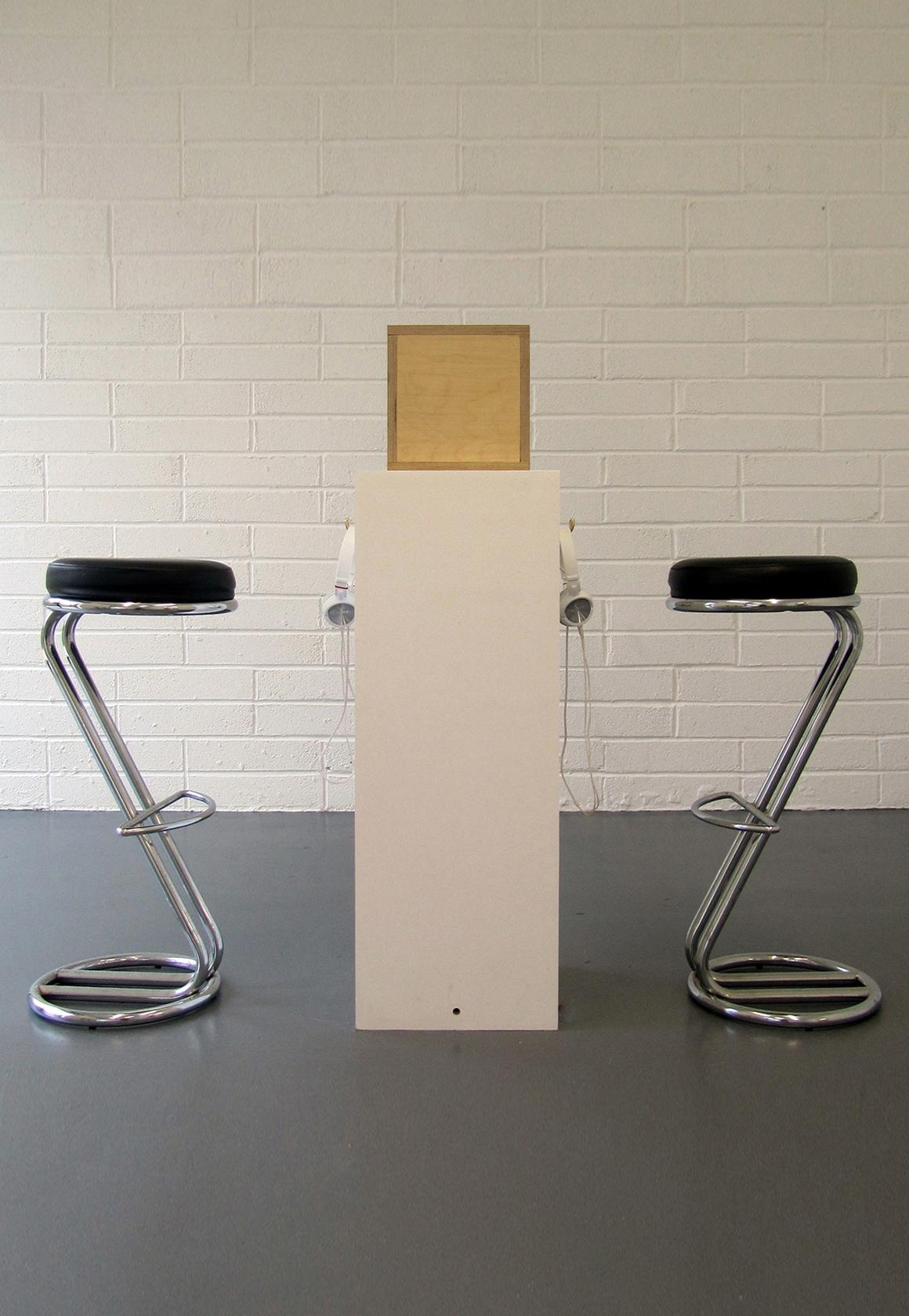 Secret, Installation View, 2014
Image courtesy of Artist
Secret, Installation View, 2014
Image courtesy of Artist
My formal education has influenced the way I approach my work in many ways. I completed my BA in Fine Art in an extremely small college in a town called Gorey in the southeast of Ireland. I think at the time the whole college might have only had about 50 students. Regardless of its size, however, there was a wonderfully diverse team of staff in place and an extremely ambitious and committed community of students. Throughout these formative years, I feel I was lucky to be working with members of staff
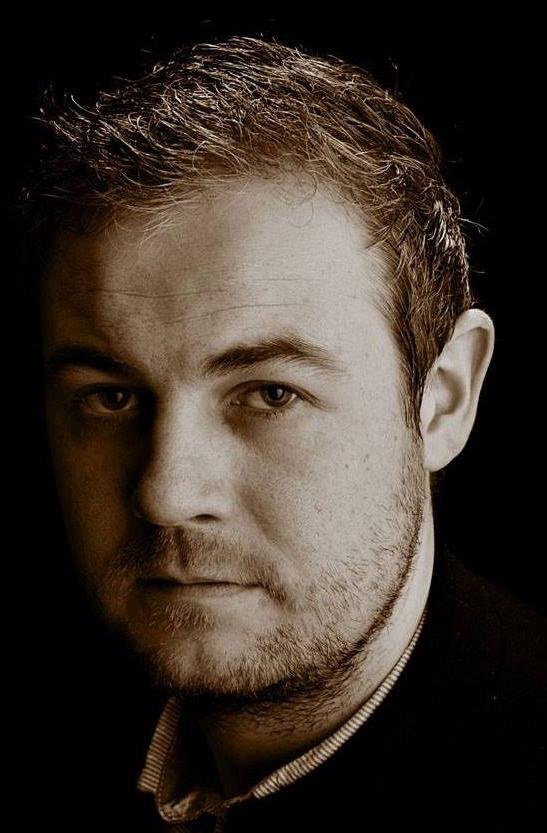
who felt a real sense for the importance of art history, which I still feel is important today.
After graduating I took a year off to reevaluate my practice before embarking on my MFA at NCAD under the supervision of another wonderful artist Susan MacWilliam. It was during these years I began to focus my practice on the history of sound-making and the aesthetics of the sonic. It was also during these years however I realised that there was a whole segment of knowledge I was lacking
Richard Carrin which I felt I needed if I was to continue my practice after leaving the safety of an art institution: The world of galleries, curators and continuous applications. So, I pushed myself in this direction completing a year's work-placement at the Irish Museum of Modern Art under the guidance of Rachel Thomas; Senior Curator & Head of Exhibitions as well as completing a PGDip in Business in Cultural Event Management from the Institute of Art, Design and Technology, Dublin. So, taking the above into consideration and trying to answer your more specific questions, I think I now approach my work(s) with the view that they may have a much longer life-cycle than I previously thought and one I am not necessarily in control of. Saying this, however, for me to productively work in the studio I try to leave as much of the above at home in the attempt to have as genuine as possible engagement with the development of the work in the moment of making it.
To be honest I have never thought of my work as multi-disciplinary or consciously made decisions to cross media or mediums. They usually just evolve over a period of time, like a conversation but a conversation with myself perhaps. I always begin with listening, whether I’m in the studio, out for a

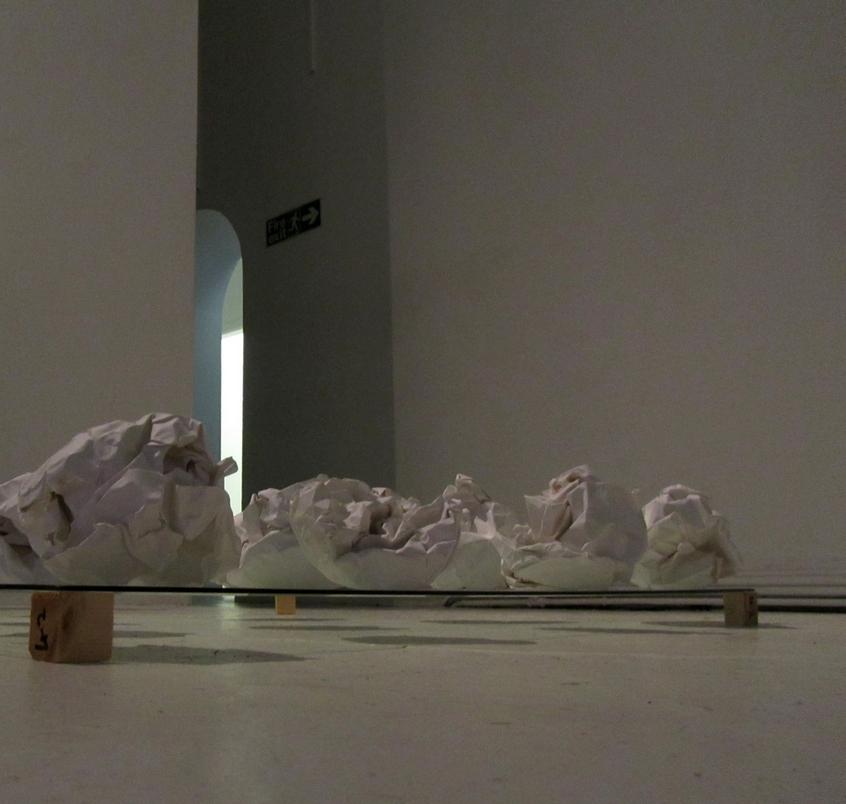

walk, sitting in a café etc. I have often been told by friends that I can have a whole conversation with them while being immersed ‘sonically’ in some stranger's life the other side of the room, the trickles of a fountain or squeak of a hinge. I usually have my recorder with me and if something grabs me I begin recording. Other times I specifically put myself in environments of particular interest and participate in the environments sound-making more consciously, like Pythagoras’ Cave for example. Usually, the sounds are all brought back to my studio where I consistently listen to them over and over until I have a sound I am in some way happy with. The work never begins with an idea or pre-mapped plan but constantly shifts the more I spend time with it.
It’s only when I am invited to exhibit work do the pieces themselves become in some way resolved. It is at this point I engage with the physicality and spatiality of sound and this usually evolves out of a conversation between the ‘sound work’ and the architecture of the gallery or exhibition space. Often the first time I experience the work in its ‘finished’ form may be the day before an exhibition opening.
Yes, Secret I think is an unusual work and feel it kind of sticks out in relation to my practice as a whole. It was developed at a time when I was obsessed with considering the history of sound within a visual art history and became increasingly interested in the work of Robert Morris, especially his work ‘Box with the sound of its own making’. The reason I became interested in this specific work was I




was using a similar process of recording the making of the work in one of my earlier pieces Construct? Unlike Morris’ work, however, Secret doesn’t possess the sound of its own making but rather facilitates a participatory process allowing for the sounds of ‘our own making’. What I mean by this is that Secret doesn’t have any sound and is essentially a silent work. However, it does invite people to interact/perform for each other in a subtle way via the work.
Secret is essentially a wooden box sitting on a plinth. Inside however are two omnidirectional microphones set up to provide one live binaural feed to two sets of headphones. Only slightly amplified, it picks up the sound of the participant's hands rubbing, tapping and scratching the box. As it is one live feed, each participant hears and ‘feels’ the sounds of the other participant's hands gently moving or caressing their head. As the performance is not recorded, the sound they create only lasts for as long they engage with each other and the piece etc.
and logic. For example, you mention I spent most of my college years in the painting department, which is true. This came about as there was no option of a sound or listening department and the painting department was the closest thing I could find in approach to the philosophical, ontological and phenomenological interests I had in making work. This I presume is a direct result of art colleges falling under the umbrella term of visual culture and therefore take the approach of a visual led sensibility and logic.
Gemma Corradi Fiumara discusses this evolvement in depth in her book ‘The Other Side of Language; A Philosophy of Listening’ where she discusses how Western societies have become accustomed to mechanisms and logos of expression, speaking and reasoning. This according to Fiumara is a half logic, a logic not conducive of listening in the way in which it once had. She discusses this through historic developments of the term ‘logos’ in which was once ‘legein’. A more wholesome term that included a process of ‘gathering’ alongside ‘saying’ in the formulation of knowledge. A disappeared process in our current term ‘logos’. By not holding a process of listening on equal footing, we are diminishing the possibilities of truer forms of dialogue while becoming subordinately dependent on the power, domination and dialectics of saying. While all this seems very abstract, we can see the effects of this play out in very real terms within the everyday. For example, if we look at the pinnacles of our societies, Dáil Eireann or the Houses of Parliament, they are currently based on a structure of controlled speaking times.
I’m delighted you have referred to Marshall McLuhan here because I think he is right when he points this out. I do believe that Western societies have over time moved and become more reliant on a visual sensibility
Yes, you are right to refer here to my work ‘Play it by Ear’ which does in a way attempt to approach this subject. Play it by Ear was recorded during my research visit to Pythagoras’ Cave on the Greek island of Samos. It was an attempt to experience the sonic environment that Pythagoras may have experienced while teaching his pupils from
behind a curtain. It was also an attempt to enquire into these early interventions of acousmatics that it is said Pythagoras practiced. At this time I was also researching various histories of listening as a critical practice and became very interested in the research/discoveries led by Iegor Reznikoff. Reznikoff proposes in his text ‘On Primitive Elements of Musical Meaning’ that there are direct relationships between the images and placement of cave paintings and the sonic resonance of the cave itself. For example, he proposes that listening is our most primitive sense and that the Palaeolithic people engaged primarily with their caves on sonic terms. Using his voice to navigate, Reznikoff discovered that every time he stumbled upon narrow galleries of the cave, with high resonance, there appeared a painted red dot. He also discovered that in small recesses or narrow hollows that resonated strongly with low sounds, appeared paintings of animals which make similar sounds, for example, a bison.
So, getting back to your more specific questions; listening and sound have always worked alongside the visual in inventive ways. It was never a reduction of the visual or less than the image, but something different that often brought forth unseen visualities. However, with Western societies engagement with knowledge from the perspective of the eye, this noisiness has far too often been silenced and we can see this from the dominant perspectives of art history. More recently, however, we can see a reengagement with a sonic sensibility with many authors and artists investigating the term ‘Sonic Art’ and what this might mean.


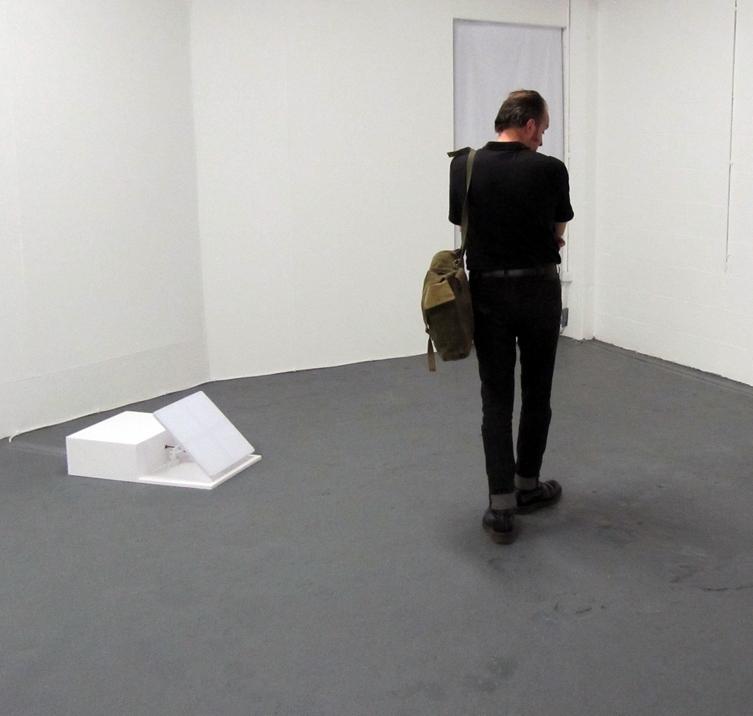
This is an interesting question and something I have been thinking a lot about lately. For me, I rely a lot on the public sphere and the publicness of sound in relation to gathering my material. Within a contemporary context, the materiality of sound increasingly positions itself as an intriguing and important medium for notions of public art. The invisible mobility of the sonic, its continuous presence and formless form, lends itself to be an important tool to explore, intervene and interrogate visual givens. A lot of urban planning focuses on notions of space and place; what happens within and between buildings, punctuated by architectural design. What is often forgotten about is the acoustic environment and how these architectural punctuations can disable or enable our sense of self as sound-making and listening beings. Sound becomes the public 'in-between' of urban planning, linking together all the consecutive ‘things’ that often remain apart. Therefore, sound plays a crucial role in the production and interactivity of the public sphere by embracing the ‘fluidity’ of ‘publicness’ and the ‘publicness’ of a ‘sonic aesthetic’. It’s the invisible and passing nature of the sonic that makes visible that the infrastructure is not the public. Rather it is the way we as communities interact and participate within and through these infrastructures that the notion of ‘public’ becomes generated.
This conception is not new; it was known for example by Jeremy Bentham when constructing his plans for his Penitentiary Panopticon. At this time, however, the inward-looking world of observation and isolation could not master the social activities of sound and Bentham dropped his idea of placing ‘sound tubes’ from his central tower to each cell as they worked both ways, simultaneously opening up and connecting the central tower of observation to the 'observation' of the prisoners.



In relation to my own work I see an innately sustainable stability within the fluidity of the sonic; one which provides a different sense of knowledge and publicness – one that may not fit comfortably into a visual scheme of quantification but one in which allows for personal, sensory qualities to be illuminated. This I believe is a relationship that reconsiders the primacy of a reflective process [visual aesthetic] to one of a living and motile process [sonic aesthetic]. Taking this approach, I feel generates an immersive engagement with the liveliness of environment, disrupts normative conceptions of reality and actuality by allowing an opening up of a more plural imagination of the world.

It is funny how you selected Residual Error to link with the idea of randomness as it is the one work of mine that was made solely within the controlled confines of my studio. However, I think you are quite right and thinking about how to answer this question from this perspective has led me to discover new insights into this work. Residual Error began with research into both the Pythagorean Comma and Pythagorean Tetraktys. Both these systems rely heavily on mathematics, geometry and logic, anything but randomness. However, through the utilisation of maths, both were attempts to understand or quantify Pythagorean unknowns and from a certain perspective the randomness of being.
The title of the work takes its name from a mathematical mistake made during Pythagoras’ discovery that you could make a musical scale by continuing through the ‘Circle of Fifths’ and dividing down harmonically with the ‘Law of Octaves’ to determine the pitch of each note.


However, Pythagoras’ calculations do not add up correctly and leave a small residual error, in which some say, we can hear if we choose to listen out for it.
So yes, you are quite right that I urge people to elaborate on their personal associations. I feel this is important as I don’t believe the work, in and of itself, holds all the answers. For me, the work participates in the formation of meanings and just like that I like to think that people simultaneously participate, rather than rethink an a priori meaning laid out before them.
Well, I have never been sure what the role of the artist is or if there should be one. However, I think I understand what you mean in relation to technological developments and the opening of global communications. For me, while I think these developments have certainly impacted/enhanced the possibilities for artists to engage with different mediums/media, I believe they have possibly served other sectors of society much more. While many contemporary artists utilise or even challenge the potentials of new media, I find, similarly to how you describe innovation, that there are usually undertones and experiences of ideas and practices that have been around for decades or even centuries.
Taking Angela Bulloch’s quote that you mention, I feel it describes my work Secret in which I spoke a little about earlier but maybe even more so my work Construct? On the


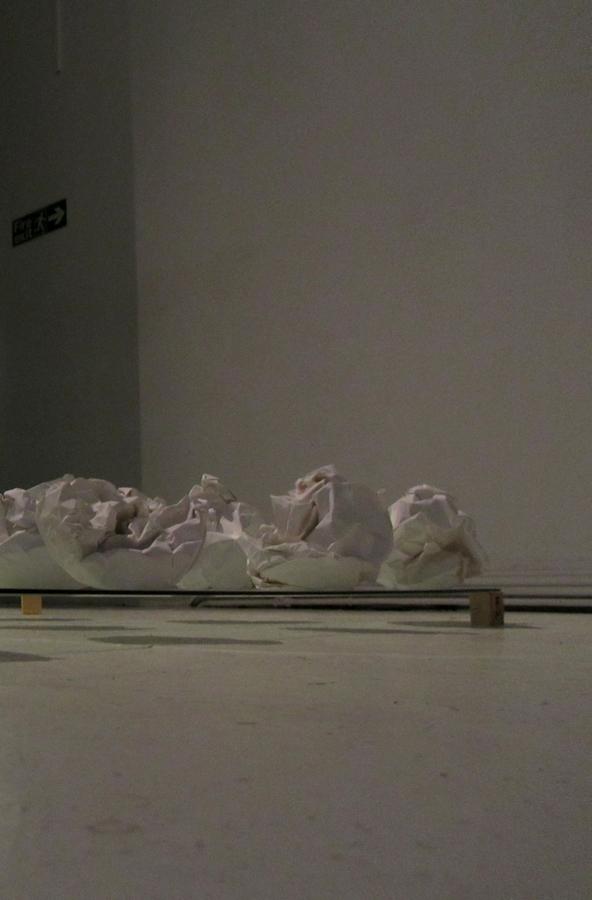

contrary, however, elements of change may not inherently reside in the ‘work’ but yet they continue to evolve and shift. For example, my earlier work MOUNTAIN was recorded back in 2012 at the border crossing from Turkey, looking out to the Greek Island of Samos in the EU. At this time, the border was quite invisible and extremely porous with thousands of people making their way in and out of the EU with ease. This notion of ‘open borders’ captivated me at the time and was something that played a central role in the development of MOUNTAIN. Today, however, we can see how this context has changed, with these invisible lines/borders increasingly becoming more visible and concrete. So of course, when I now experience MOUNTAIN, it brings up a whole set of different meanings and associations than it once did and from this perspective, I feel a quote from Irit Rogoff may be more appropriate.
In a “turn,” we shift away from something or towards or around something, and it is we who are in movement, rather than it. Something is activated in us, perhaps even actualized, as we move. And so I am tempted to turn away from the various emulations of an aesthetics of pedagogy that have taken place in so many forums and platforms around us in recent years, and towards the very drive to turn.

My background also plays a large part in this as I have spent over half my life living alongside people who have been clinically diagnosed with various degrees of mental illness from Depression, Bipolar and Paranoid Schizophrenia. Willingly embracing this, daily you enter and exit many invisible, possible worlds. Ones I may not be able to see or listen to for myself, but ones I partake in, which consequently affect and alter my reality and through my participation alters the world that is both invisible and inaudible to me etc.
From this perspective, I suppose my work aims to consciously and simultaneously bring the worlds of reality and imagination together if they do not already exist as one.
attempted to open a work to an audience, the more I began to control to open environment in which I was inviting the audience into etc. So, in my more recent works and especially in the early stage of producing work, notions of audience reception do not enter at all into the equation and certainly not as a component for decision-making. My process begins with listening; it’s a personal and intuitive engagement until I stop.
On the other hand, in terms of being invited to exhibit work, my thought process shifts and begins to think about the logistics of the space itself. I begin to engage with its architecture, sonic environment and how the flow/movement of people may take place within its context. The flow and movement of people through space becomes important for me at this stage and becomes part of the conversation in how the work may be installed or realised. From this perspective, audience reception can play a part in my decision-making process.
This is a difficult question to answer as my work evolves at different times and within different contexts. Notions of audience reception/participation played a much more crucial role in my earlier works. However, over time I came to the belief that the more I
Thank you, abens, it has been a privilege to be able to chat with you. Yes, currently I am working on several projects and will be participating in an exciting, upcoming international exhibition in Ireland later this year. I have also been invited to develop a new sound installation, which will take the form of a solo exhibition in a gallery space in London in 2018 which is great and something I am looking forward to. I don’t want to say too much about these at this stage; however, people can keep up to date with these developments through the news section of my website:
An interview by , curator and curator
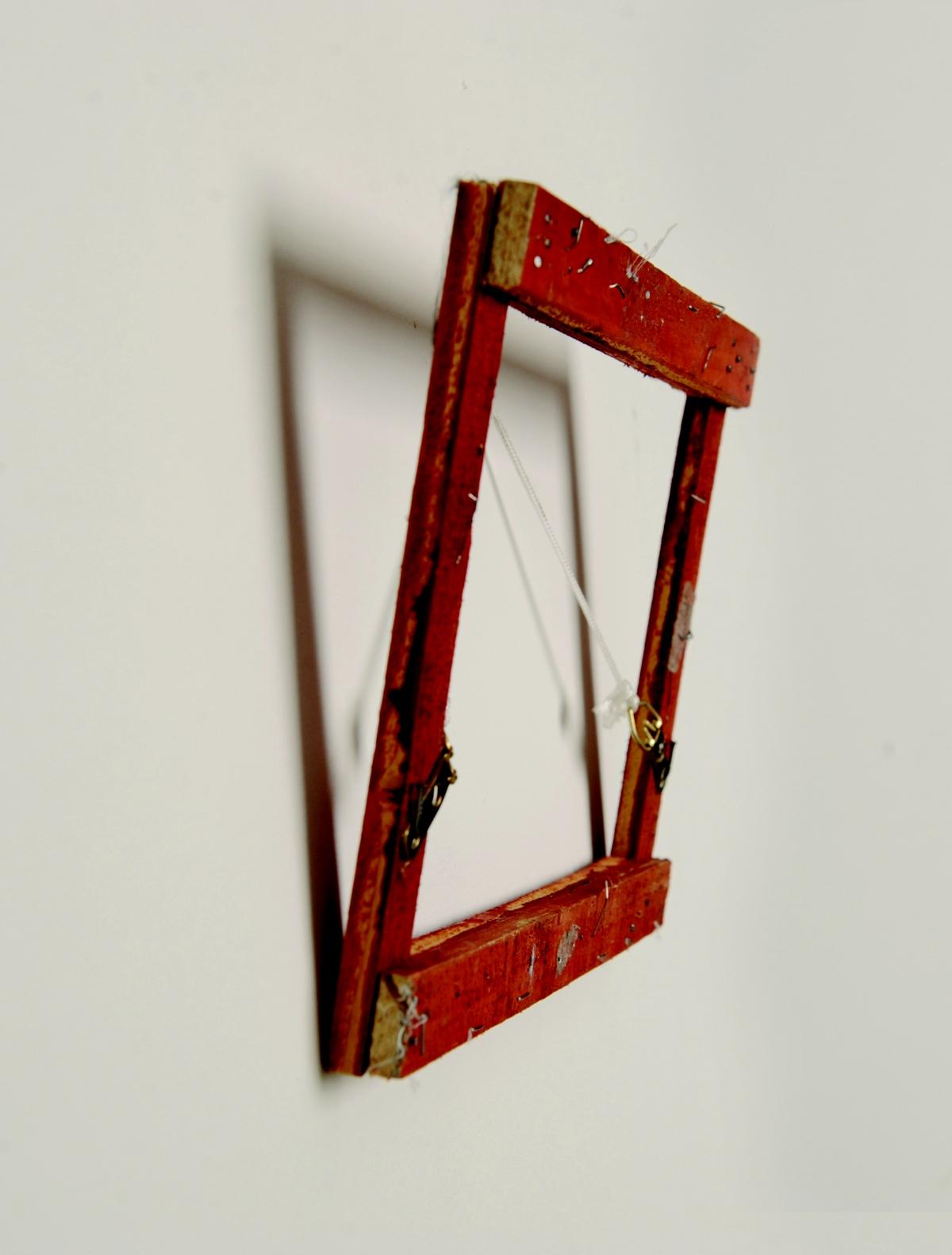
Lives and works in Vancouver, Canada


 Holly w Damien Hirst, FIAC Paris 2012, photo by Murray Fraeme
Holly w Damien Hirst, FIAC Paris 2012, photo by Murray Fraeme
 Holly Marie Armishaw
Holly Marie Armishaw
I believe it is an asset to any profession to know ones industry from every angle. So, I have volunteered in galleries, served on student councils, curated shows presided on boards of arts organizations, written art criticism and theory, and organized everything from panel discussions on contemporary art to private collection visits. While each of these positions or projects has been challenging, they have also been quite rewarding.
Being involved in various positions within the art community has enabled me to assist in providing other artists with opportunities and a voice within our various institutions. For example, CARFAC (Canadian Artists' Representation/Le Front des Artistes Canadiens) is responsible for ensuring that artists receive payment for exhibiting at non-profit galleries, whereas in the U.S. artists often have to pay. My position on the Board of Directors of the CASV (Contemporary Art Society of Vancouver) provided a challenging and informative experience. It afforded me the opportunity to expand my network and to develop many cherished long-term friendships. In 2014 I organized and led a weeklong tour of Paris’ contemporary art scene for a dozen Vancouver-based art collectors. It was a wonderful to work with our consulates and an opportunity to share my passion for French art and culture with a Canadian audience.
Another key factor in my practice has been travelling to attend various international art fairs and biennales. I thrive on the opportunity to experience the crème de la crème of the world’s most influential artists

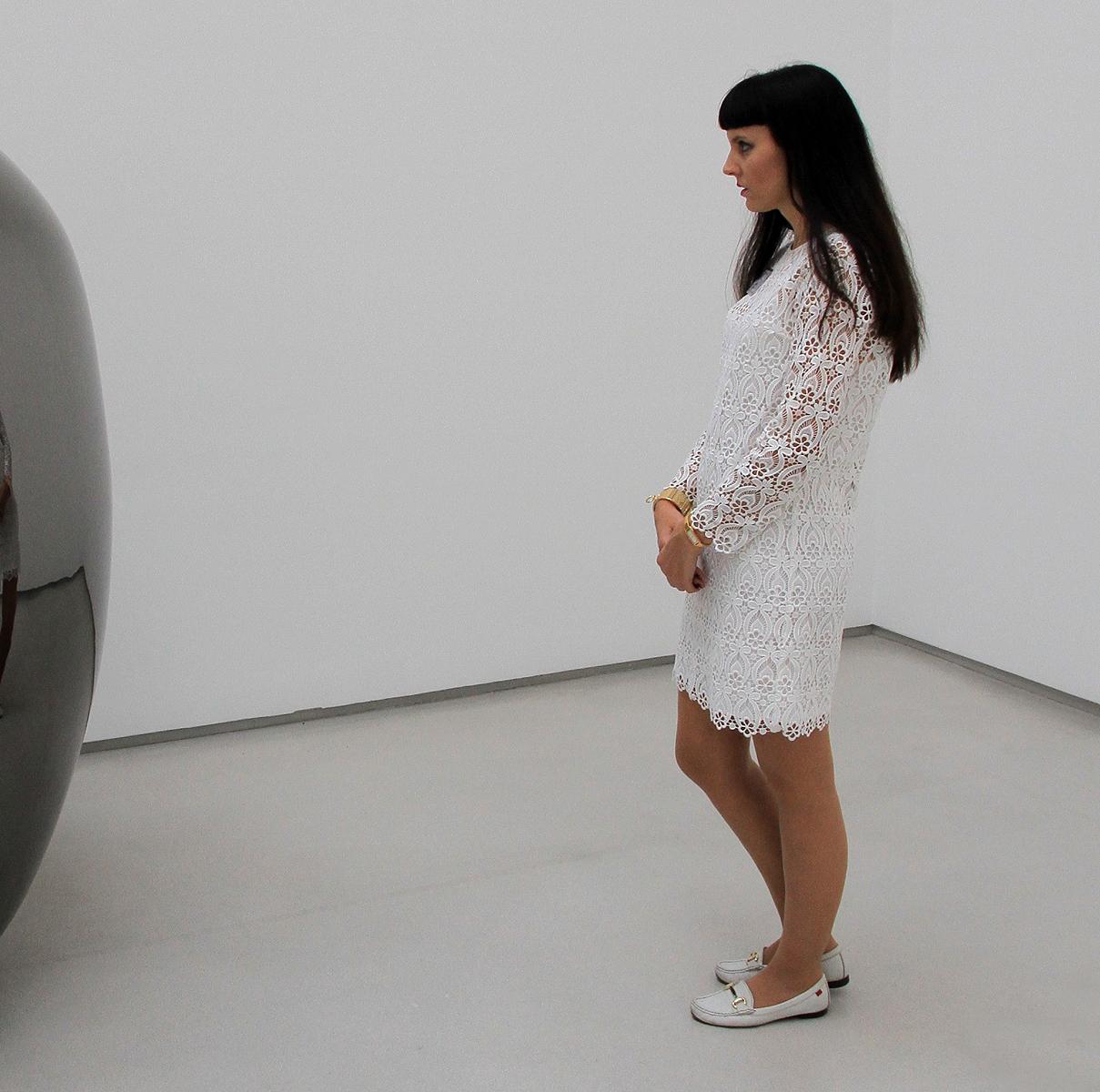

all beneath one roof. This always proves to be a riveting experience providing both inspiration and a sense of how my own work fits into the larger context of the art world. Drawing inspiration from the works of other artists is something that often pushes me in my own work and is also an experience that compels me to come back and write as I analyze connections between them. Writing has always been an essential part of my practice, and Sotheby’s gave me the tools to sharpen that skill.
I attended art school on the cusp of the digital revolution. At the time that I was completing my photography degree, barely anyone used digital camera, and certainly not art students. I began spending less time in the darkrooms and more time in the computer labs, scanning my film and importing it into Photoshop. Perhaps it was a reaction against Roland Barthes Art in the Age of Mechanical Reproduction that pushed me away from straight photography and into a modus operandi where I could have more freedom to create my images, rather than merely record them with the camera. Digital imaging

served me well to express subjects that piqued my interest at the time. I began art school with a sideline interest in metaphysics, which led me into philosophical and scientific theories like quantum physics and the Many Worlds Theory. When the first sheep, Dolly, was cloned, it provoked me to explore genetic engineering and the Human Genome Project in my work, illustrating a strong consideration for potential discrimination in the future, such as we saw in the cult classic movie of the time, Gattaca. The concept of immortality has also been a ubiquitous theme in my practice and led me to explore post-human endeavors, such as cryonic suspension. Digital imaging was the perfect tool to express these concepts which there was no way to photograph directly. It has remained one of the most important tools used throughout my art practice.
Post-art school, real life tends to take over. It became extremely difficult to produce work after awhile because of massive student loan debts, the high cost of living in Vancouver, and long work hours. It seems that not everyone can live without art. My work eventually became focused on more immediate and personal concerns than it was previously. The Silencieux series describes a period where I began breaking down physically and mentally, suffering from panic attacks, night terrors, migraines and a host of other maladies. I lost my job as a result and was left with nothing but my camera, computer, and a small suite to live and
work in. I used these three elements, in addition to myself, to create a series self-portraits that described these conflicts between the mind and body, again using digital imaging, but this time to describe the psychological aspects of my own experiences.
By 2011 I was back on my feet and travelling extensively, producing a massive archive of photographic imagery thanks to the luxury afforded by the proliferation of the digital camera and it’s ability to store thousands of photos. I used some of my photos from Versailles, combined with self-portraits shot in my studio specifically for this purpose, in order to create my Marie Antoinette series. Each image contains a minimum of three photos composited together. Although technically they are selfportraits, it was an intentional shift away from the subjective to an objective focus on the trials and tribulations of another woman. Research once again became a key part of my practice, and I spent two years studying the French Revolution and the life of Marie Antoinette. By highlighting little known facts about her life, I was able to humanize a woman who served history as a convenient scapegoat for the mistakes of generations of monarchist rule.
France’s financial deficit had become an issue years before Marie Antoinette even came to France to marry Louis XVI. Louis XIV and his advisors were much more to blame for France’s financial crisis because they had spent
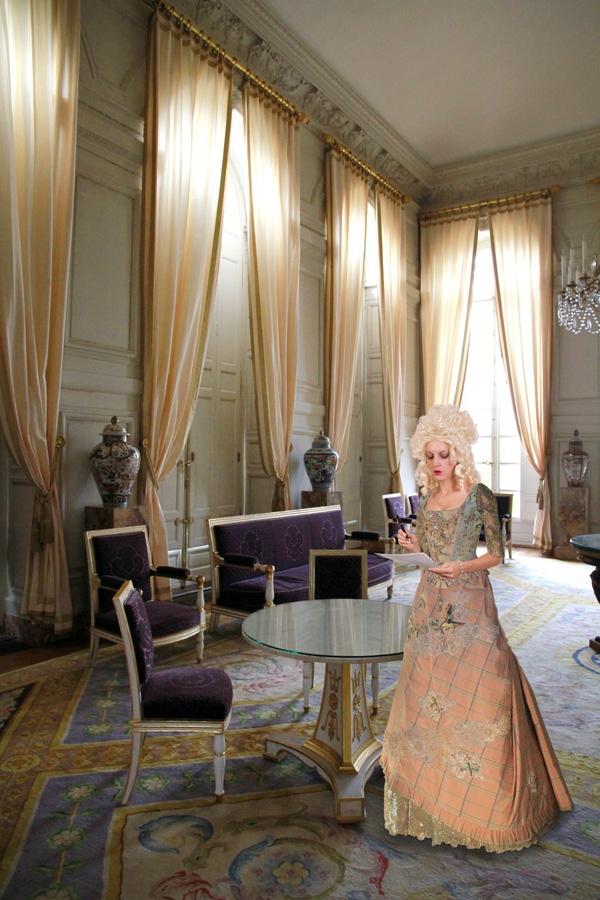 “Marie Antoinette Declaring Financial Incentive for Women of France to Breastfeed Their Own Children” (2013) 24 x 36” C-Print, Holly Marie Armishaw
“Marie Antoinette Declaring Financial Incentive for Women of France to Breastfeed Their Own Children” (2013) 24 x 36” C-Print, Holly Marie Armishaw
 Holly Marie Armishaw contemplating the work of Daniel Firman, FIAC 2012 (photo by Murray Fraeme)
Holly Marie Armishaw contemplating the work of Daniel Firman, FIAC 2012 (photo by Murray Fraeme)
far beyond their means supporting the Americans war of independence against the British, France’s enemy at the time. This was the beginning of my interest in historical revisionism, a strategy that I am still employing in newer bodies of work today.
To answer the first part of your question, I began working on the Repressions series shortly after being diagnosed with PTSD in 2015. Repressions deals with the effects of abuse and trauma on the body and mind. While we commonly associate PTSD with persons who served in the military or who survived a natural disaster, the scope is actually much more diverse. A child who endures repeated abuse at home and cannot escape will suffer the same effects of trauma as a prisoner of war or a hostage situation survivor. That was my situation for ten years growing up and the result is what’s known as complex PTSD. Being perpetually put into a state of flight or fight response is extremely taxing on the body, often
leaving the survivor with an impaired immune system, anxiety, depression, and a host of other disorders, many of which do not appear until later in life. Decades later I still wake up screaming in my sleep from time to time, and have on a few occasions jumped out of a moving vehicle due to trigger responses. Rape survivors or those who endured childhood sexual abuse may not only develop PTSD, but also reproductive disorders, even causing chronic pain as a result of the body’s memory of the trauma it endured. When I confronted my family in 2013 on my history of abuse, not only was no apology offered, but they also completely denied my allegations. I have since estranged myself from them, but the stress and shock from their response (or lack thereof) to incidents that have affected me my entire life has caused further damage to my health. For me art has become a cathartic process in learning to understand and come to terms with the world. And, as the second wave of feminism stated “the personal is political”. I know that I am not alone and by sharing my personal experiences in a symbolic way, I am able to open up dialogue about the widespread abuse of girls and women. It’s easy enough to tell survivors to “get over it”, but that contradicts the science behind trauma and abuse. In the Repressions series, remnants from the photos spill over from the image and into frame just as repressed memories from the past spill out into the present.
In response to the second part of your question, you have already previously noted the multiple layers of meaning that runs throughout each work, and this demonstrates the complexity of my creative thought process. Regardless of the style or technique I use in each series of work, the most essential underlying element is existentialism. As a key theme throughout my practice, according to its broadest scope, existentialism examines issues as diverse as selfawareness, individual human experience, immortality, individual purpose, and the nature of existence or reality and truth. Often truths are uncomfortable for many people, and art is a way of bringing them to light in a more delicate manner.
I concur with Orozco’s statement; and I would expand by saying that the most authentic art comes from a place of reality, one that the artist is intimately
familiar with, even if that personal connection is disguised. Of course, metaphysics has taught us that the

nature of reality is subjective. Since the world can never be known through a singular perspective and we all bring
different tools and sets of memories with which to analyze and interpret our existence, it is essential that

contemporary art be produced from a multitude of perspectives. We are each an authority on what we live. Politics in
art signals a state of discontent. The artist who is content and bears no angst against oppressiveness towards

themselves or their community may find satisfaction in making art about art, perhaps about the semiotics of
painting. Anger and discontent are very powerful motivators. In a recent conversation I was told that “art should

"Eggs" (2015-16) 24 x 24" C-Print with Eggshell, Holly Marie Armishaw
respectfully disagree. A look at some of the most important and powerful works

not be about politics; we have journalism for that” to which I mustHolly Marie Armishaw ART Habens
throughout art history are a direct reflection of the conflicts of the time they were created. Examples include Goya’s Disasters of War (1810 to 1820), Picasso’s Guernica (1937), and the Guerilla Girls Do Women Have to Be Naked to Get Into the Met. Museum? (1989). During this key moment in history when we are experiencing a daily assault on democracy it is essential that artists fight for ideals of hard-won liberty and equality in order to secure it for future generations. I am privileged to be an artist in Canada where freedom of speech is protected; a luxury many others around the world live without. Lately I have been developing an interest in Islamic feminism, but as someone who has not lived in an Islamic state, it is not my place to speak for others. As an alternative, I have written on the art of Shirin Neshat, an exiled Iranian artist, who brings the Islamic feminine existence to light for a Western public. Neshat is a powerful political voice in contemporary art, and one that I have great respect for. My father once told me that “art is a self-indulgent profession”. I would like to see contemporary art prove this wrong.
Throughout the history of my practice, I often employed a visual narrative strategy. But with Repressions, I pushed myself to try something different, like learning to speak a second visual language. By using symbolism I was able to deal with sensitive subject matter more comfortably to speak to a female audience, without alienating my male audience. Women are more apt to understand my references in this series, such as using eggs as metaphors for ovules. This was a more poetic approach using universal imagery that was less subjective in representation, therefore allowing more women to enter themselves into the dialogue.
Creating an immersive experience for my audience is becoming increasingly more important in my practice. I have been experimenting with this by creating contemporary uses of trompe l’oeil in some works. Again, this harkens back to the theme of the conflicts between illusion and reality and the blurred line between them. As for contemporary art in the public sphere, I think it’s an essential practice to promote inclusivity and to engage the public with challenging ideas that they might otherwise not be exposed to. I am just beginning to look for opportunities to do public installations with my work.
women are actually treated equally today. I am a feminist not because it is trendy or because of anything I learned in critical studies classes at art school. I am a feminist because I spent every day growing up having my older brother try to beat any sense of equality out of me, to break me and force me into submissiveness. (It’s not unusual that women who resist will face the most extreme measures of coerciveness.) And yet, I realized at a very young age, I had an innate sense that I was equal or better than my abusers. I am a feminist because as a teenager I worked to put myself through private school and was subjected to sexual harassment constantly in my workplace. I am a feminist because my ambitions as an athlete in my teens deteriorated rapidly after a sexual assault when I realized that no matter how fit or strong I was, there would always be some man who was stronger than me. I had to be smarter than them to survive! As I headed into adulthood, I found myself gravitating towards an intellectual and creative career path and resettling in communities where men were well educated and more enlightened. I am a feminist today in hopes that your daughters can grow up in a fairer world than I did, one where they are valued as human beings that hold as much potential as their male counterparts.
It is a deluded and dishonest perception if anyone thinks that
The dehumanization of women has been a timeless struggle, one that transcends not only time, but also race
 “Marie Antoinette – Under Pressure to Produce an Heir Throughout 7 Years of Unconsummated Marriage” (2011-12) 24 x 36” Metallic C-Print Holly Marie Armishaw
“Marie Antoinette – Under Pressure to Produce an Heir Throughout 7 Years of Unconsummated Marriage” (2011-12) 24 x 36” Metallic C-Print Holly Marie Armishaw
and class. Even the most privileged women suffer as a result of the gender norms of their time, as I demonstrated in the Marie Antoinette series.
I don’t believe that my position as a women provides my work with any
special value or additional meaning other than being in stark contrast to decades of art history, from which the majority has been produced from a male perspective. When I attended my first art history class, I thought “What a

great way to learn about the history of civilization!”. But, if art history only reflects half of humanity, then how accurate and complete is it really? We need women artists to balance the story of human history as much
as we need records of art produced by non-western civilizations.
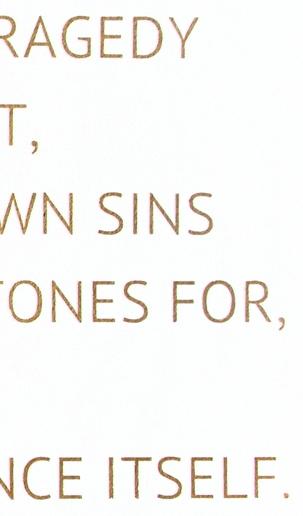
Tradition has often been a source of oppression for women and many others, whether those traditions are religious or cultural. Contemporariness seeks to scrutinize and, in many cases, break those traditions. So, yes, there is a strong contrast between them. As an atheist, I feel extremely liberated from many traditions that would otherwise restrict my freedom of thought and lifestyle, and that would only serve to consume my energies and distract from more meaningful endeavors.
I don’t recognize anything in my works as being fictional. I think that we need to differentiate between illusion and fiction. Even a hallucinogenic experience is a “real” experience to the experiencer. My

intention is often to present allusions to underlying or hypothetical truths through the use of photographic illusion. Sometimes these allusions are in reference to taboo personal truths or historical inaccuracies, while at other times they are more are more playfully reminiscent of the type of truth portrayed in Magritte’s “Ceci n’est pas un pipe” (1948) that examines perception.
I have recently created a series of work that examines the history of the mirror in relationship to photography by using illusion to engage the viewer. The mirror was invented in Murano when glass craftsmen applied silver to one side of plate glass. It is my theory that the invention of the plate glass mirror created a profound new sense of selfawareness. When early viewers of the mirror saw themselves reflected, that experience provided the impetus to preserve the image that they saw for posterity. Louis Daguerre worked feverishly to “fix” that image and soon invented the Daguerreotype, a photographic image produced on a small mirror-like silver surface. In fact, silver nitrate particles are still used in labs for photographic processes today. The Daguerreotype was the first photographic process readily available to the public, thus democratizing the practice of portraiture beyond the upper class that could afford to commission portrait paintings. Who would have thought that today’s mass phenomena of the selfie would have originated in a
glass atelier centuries ago at a small island off the coast of Venice? History has become a keen interest of mine, because it is so rich with signifiers that explain our zeitgeist.
Production of art will continue to embrace new technologies as they consecutively evolve. However, there is also a reactionary effect occurring as we see a return to materiality and a highly skilled hand; the phenomenal paintings of Kehinde Wiley are a great example of this. As an artist whose primary medium is photography, I have been forced to reconsider what that means now in an era where cell phones, filter apps and social media have induced a mass proliferation of the photographic image. I have challenged myself to think about approaching photography differently and it has affected my production, techniques and materials. As previously mentioned throughout this interview, while layers, both literal and conceptual, are still a key element in my work, the literal layers are now created out of tactile materials rather than from photographic ones. This is my way of reacting against the immediacy of the photographic medium. By creating works that require an in-person experience in order to successfully
experience their essence, I am encouraging art connoisseurs to leave their screens and to enter into the gallery space where I may interact with them more directly.
Became a Feminist by Reading
Certainly the work is more successful if the audience can find a relationship to it, and at times I have a certain city or venue in mind while I am creating a series. I assume that you are speaking about my text-based work. In 2011, I began etching nasty little phrases in French using a lyrical font etched onto elegant gilded antique mirrors. These phrases cast a self-reflective scrutiny on the viewers. I had hoped to show that work in France, and would have liked to witness their reaction. The work did reach a Canadian audience, and fortunately we speak many languages here, so there were those that understood. However, with more recent text-based work I am using English, as it is both my first language and spoken across the globe.
Nietzsche. This is text-based work painted with nail polish on watercolor paper on some pieces, and with gold leaf on others. The nail polish was deliberately chosen as a feminine material, and one that has previously been foreign to the art world. Using these materials I have composed quotes by Schopenhauer, Nietzsche and Freud, which I have edited by changing all masculine signifiers to feminine ones. This editing process of inverting assumed gender norms reflects how a woman must read the work of a misogynist in order to still benefit from his words of wisdom, rather than completely dismissing them. These particular philosophical writings had a profound effect on me at a crucial stage of my life, during a point of existential crisis when I was also becoming both an adult and an artist. Though misogynistic, these men's words provided clarity that formed the core of my adult values; their influences both inspired me and brought out a streak of defiance, which, combined with my own personal experiences and existential conclusions, have contributed to my being godless, famliless, and remaining childless, all of which are deliberate and essential to my focus as an artist.
I am very excited to have just completed a new series of work, How I
An interview by , curator and curator



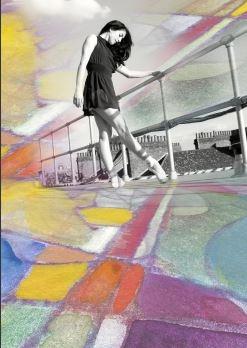 Longines Photography and Sonia Gil Collaboration
An interview by , curator and curator
Longines Photography and Sonia Gil Collaboration
An interview by , curator and curator

My training as an Architect has great influence on my work, it introduced me to Art History and to a large array of graphic techniques and ways of investigating and representing 3D space. It developed my perception as well as my representational ability.
After having completed the basic years I felt I needed more art training, so I started taking classes at the School of Visual Arts of Parque Lage and at the Modern Art Museum of Rio de Janeiro, where I attended classes with Aluisio Carvão, a neoconcrete artist who explored colour as a matter. I feel his meticulous colour exercises were part of my learning process, but after some time, I wanted to work more freely, in a more intuitive way, I was looking for something more fluid. This was when I discovered watercolour.
Sonia GilFor many years, I elected watercolour as my favorite medium, then I moved on to acrylic because I wanted to work larger. Finally, I started to work digitally mixing together all these experiences.
The way I conceive my work is very intuitive and experimental, but I am aware that I am using all the techniques I have learnt in my training process. When I build my collages in layers, the way I search for balance and harmony or contrast of forms and colours is very “architectural”, so, I think in the end everything adds up. Likewise, the way I relate to the aesthetic problem is totally linked to being a middle-class architect, living in a cosmopolitan city in a global world. My cultural substratum is not very different from a New Yorker or a Londoner, with some touches of tropical culture. I am particularly attracted by vibrant colours.
This multidisciplinary approach is the result of a long working process. I am glad it can be figured out. I have been working hard on it. It is a process of stop and go and come back and go again. I write a lot about my process, I also collect a lot of images and ideas and build from them. I am always making evaluations of my process and taking down notes and trying to have new insights.
I have also been greatly influenced by other artists. I am co-founder of an international network called Urban Dialogues. The idea of



creating the group was to examine the interactions between artists of different cities and cultures, using photography, digital art and video to capture contradictions and analogies of our collective histories. While building the group with the New York artist Amy Bassin, I was definitely taking my work to another level. I started making digital collages in collaboration with other artists of this network. So, my work was greatly influenced by this group.
But then again, I would stop and think, how can my work fit in, how can I work together with them and still be myself. So, I am always trying to figure out how to have my own speech. I guess in the end it is my architectural training, I am always building on top of other things. And then, once I find a track, I can let it flow and I can be intuitive.
As I said before, I started making digital collages influenced by the Art Collaboration Network Urban Dialogues. I started talks with New York City Artist Amy Bassin about art and the public space. This was back in 2009, we were questioning the excessive use of publicity images in the city. As an Architect and Artist, I was very excited about the urban habitat as a place of

celebration. I had the idea of megacities as lively and colourful places, meeting places and a live lab for experimentation of innovation and new ideas. Amy´s way to look at the megacity was more critic and not so colourful. She called life in New York City “the rat race” and saw excessive individualism and feelings of abandonment and isolation in the city life. We both thought that new technologies could help us start new dialogues, create networks to bring together people with similar interests that might unite diversities and similarities.
So, we started to discuss new ways of displaying art and produced collages of street scenes where art replaced advertisements on bus stops and newsstands. Excited by the first results of this collaborative work, we decided to expand the project globally, using social networks to meet and collaborate with other artists from different cities and different cultures. More than half of the world population is already living in urban areas. Our world and our lives are becoming more complex and interdependent. I believe that

we are urban-beings. Cities are a collaborative construction. So, the relation between public sphere and art today, the inner and the outside, is an ongoing process of give and take, we are constantly reaching out for new experiences. Exchanging to transform. We are living immersive experiences all the time, in the internet and in the streets. We are spectators and we are actors as well. Today everybody has a camera at hand and we are all documenting reality all the time, through our different points of view. So,
what I tried to do with the Mother´s Milk series was to mix art and performance, transforming the museum into a stage, to immerse viewers on the artist´s quest.

I like being multi task and working with multiple resources, I enjoy exploring different disciplines and media. I love to open several windows at the same time. Too many! And, generally, I have trouble in getting focused and being more productive. Although I work with art as a process and process takes time, usually I am attracted to mediums which have quick results.
I was first captivated by watercolour because it is so instantaneous, when you get it wrong there is no going back, there is no retouching, there is transforming. A mistake can lead you to a different path, you might end up with surprising results that you did not plan. Then I chose acrylic because it is also a quick medium. It dries out very quickly. I could never work with oil painting. And digital work is very resourceful, it is possible to experiment such a lot. I have had the opportunity to work in a traditional print studio at the Visual Arts School of Parque Lage and experiment with all different printing techniques and although the old manual process is fascinating, it does not attract me at all. I want something I can handle in my small studio at home. I like to work and create out of very basic resources and build up from them. I don´t have sophisticated cameras and computers.
Recognizing the exhaustion of a medium is something very intuitive, somehow work stops flowing and you have to move on, but that does not mean quitting with a medium forever, it can be temporary, you may return to the medium. I did that with watercolour. Today I see how watercolour had such a great influence in all my work.



I think that it is impossible to disconnect creative process from direct experience. It is all connected, every artist creates from personal experience. Even when the influence is not so obvious, a careful eye will always find the influence from the artist’s biography, background and life experiences. This is valid for all arts, writers, visual artists, film-makers, choreographers. My daughter´s first Ballet Company director used to say that one dances the Museums they have been visited, the books they have been read, it is about what you experience. But you also create from the experience of others, you can be very much influenced by the work of other artists. So, it is really a process of building up from experiences.
I love Thomas Struth and his work Audience. Even if I was not thinking particularly about this work in the creation of my series Mother´s Milk, once you are impacted by an art work, you have the influence within you.
The Ballerina Collection and it´s sequence Mother´s Milk are very emotional works. Mother´s Milk is about motherhood. My daughter left home to seek an international ballet carrier when she was eighteen. So, it is about having an empty nest, but it is also about myself, not only as a mother but as an artist. Art is about immersion and exposure. You don´t make art just locked inside your studio. You need the viewers to have the experience too.

I always thought of myself as an abstract painter and a colourist. I enjoyed to zoom in and zoom out to lose track of reality and just express myself in forms and colours. Representation came as a need to make sense of what I was trying to do. After some time I felt somewhat lost, I did not want to just work with the colours leading the process, I needed a graphic frame to work on. It was when I started to create maps and work with the graphic design of cities as a first layer. Then I started to work with digital collage. At first I worked just with aerial views of city, and later making collages of urban scenes. To keep the balance, between abstraction and representation, I felt I needed to move from the computer screen and go back to brush and paint to produce watercolour as a work itself again. But then I started to capture the process of watercolouring, photographing wet work and capturing different angles, creating a digital palette of images to make future collages. So, the process goes back and forth, but keeping the balance is always something difficult.

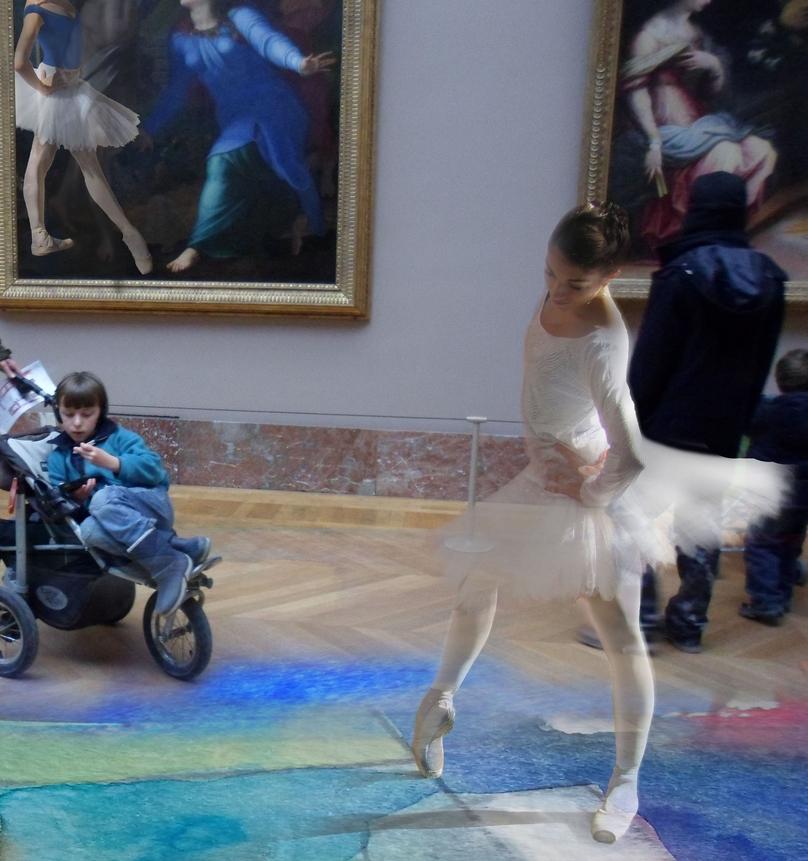

The ethereal quality comes from the watercolour. It is present in all of my work. My digital palette is a collection of freezed moments. I capture wet paint, brushstrokes, sometimes even the paper texture or the white of paper. The white of paper as a colour, I love that in watercolour, it shouts out and is so luminous! So, I collect instantaneous pictures of a very intuitive work. The conscious level does the planning of the scene I want to create, it is designed by the architectural mind, with the training of “place making”. After the planning, I start experimenting with the collage with the same intuitive drive as when I am working with brush and paint. So, it is a process of come and go, playing with the real and the imaginary.
I agree with Gabriel Orozco. When you are under a very repressive political system your work tends to be more political, it is difficult to address other issues when you do not have something so basic as freedom. So, artists under dictatorship tend to be more activists.

I lived under a dictatorship for many years when I was very young. Today in Brazil we are facing a terrible crisis, economically and politically, but there is freedom of expression.
I think the global age has changed the artist’s role, everything is so interconnected, you have so many influences. You have information overflow, it is hard to keep up and to digest everything. You must have the ability of a surfist with the big waves, otherwise you easily get drowned. People are so stressed, everything is constantly changing!! So being a digital artist is a big challenge, because unless you have a coming exhibition, you have so much flexibility with your own production deadlines, and there are so many distractions on the internet, it is so easy to lose yourself surfing around. I think the role of the artist has changed with new global comunications, one has to translate into art not only what one experiences in the surroundings, but throughout the world. Today, I suffer a terrorist attack in London in a very intense way, in real time almost, much more than my father suffered from the events of the second world war, as a teen ager living in a distant suburb of Rio de Janeiro.



Dialoguing with the audience is very important, artists create to show, we do not produce to leave our works piled up in our studios. I think we are mostly driven by the urge to express feeling, memories, experiences, but we need to interact with the audience, so showing is crucial.

I have a psychologist friend who says that everybody needs at least a little audience. I work for myself in the first place, but also, I want to tell a story to the audience and I want them to have an immersive experience, so this has to be considered all the time. I also can adapt my work to the context in some cases. At the Centro Cultural Oscar Niemeyer, I decided to make projections instead of prints. It was an exhibition of Architects Artists and I decided to make projections of my digital maps of Rio de Janeiro to enhance the immersive experience of the audience.
I would like to my work evolve to video as well and perhaps work with light boxes or 3D experience. My idea is to explore more the potential of the layers I use in the making of the collages.
My other plan is to start working more internationally. My husband and I both work at home in a very flexible way, so we are planning to have double residence RioLisbon and make Lisbon a hub for working new networks around Europe.
An interview by , curator and curator
Lives and works in Göteborg, Sweden



Firts of all, it is a honour to participate in your work for collecting different artist behind the art works. An interview about myself is a great challenge for painting a selfportrait not by brushes but with words. The Central European art education concept is closely influenced by the classical aestethical priciples and outlook of life. On the one hand, it is a conciousness to see the whole picture, on the other hand, to focus on detail and its functional role in the entirety. I learned to get a brighter knowledge of an object by switching a closer look to set a longer distance of the viewer; it is like zoom out and
zoom in the mind. Probably this method also works for a deeper understanding of any other subjects in life. About changing homeland: I think it is exciting and enriching to bring identity to another society. Hungary and Sweden has different parameters of the geographical, social and cultural environtments. It is lifestyle, mentalty, in contrast to Hungary, the closeness to the sea and the amazing Scandinavian light. It affected and evoulted a brighter look of life, my visual and aesthetic approach as graphic designer and artist as well.
 Ferenc Flamm
Ferenc Flamm
During my childhood and all those years in Budapest, I experienced different kind of impacts to my field of views. Beside my art studies of human body, I came in contact with traditional Hungarian stud farms, became interested in horse and their movements. But at the same time, as a college student, I participated in a dance company and also created later an own music group. As a matter of fact, I came to Sweden first as a musician. At that time I came in closely contact with the stage and fell in a lifelong love in performing arts. At the time when I moved to my second homeland and formed a family, I established myself as an illustrator and graphic designer, cooperated among others, with leading Swedish companies as the Volvo and Saab. During this period, I storaged my multilayered experiences in the “treasure chest” of inspiration. Some years back, I received more and more commissions to accomplish portraits, mural paintings, etc, and it was time to switch my career and begin to create my own art projects. When I prepare a new body of work, I choose my focus to different themes mostly instinctively, but lately, I return to the enchanted world of stage. A few years ago, I had an art exhibition at the Concert Hall of Gothenburg around the theme of the Gothenburg Symphony Orchestra, performing under the lead of chief conductor Gustavo Dudamel. A new project starting by


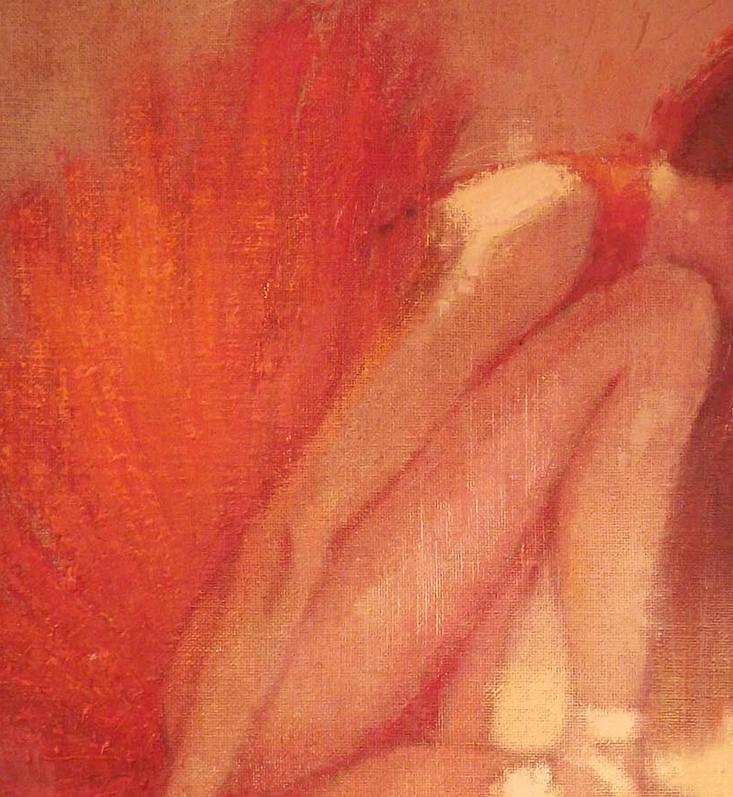
collecting ideas, color ranges, sketches, also photo references. In the beginning, I work with pastels on paper in several stages until the image is ready to transfer for creating an oil painting on canvas or on board.
The atmosphere of stage, the magical tension of creating something in immediate, ongoing moments is a fascinating process. Performing arts is one of my favorite themes. If someone had once an opportunity for performing and experienced the direct contact with the audience, this feeling is rooted forever. When we talking about some kind of arts, as painting, photographs or literature, if the artist had luck to capturing those rare glints, it can relive again when the public share the work. The idea for composing The Stage Door Collection was to manifest a creative process of preparation before the curtain rises and the performance begin. I wanted to mediate sequences, just walking through the stage door to the rehearsal in order for catching moments, characters, hard work, intimacy and concentration. For implementing this vision, I am thinking and acting through the underlying training of aesthetical valuations from my classical education.


Bewinged
At the start of a working process, the visualization of ideas takes form as black and white charcoal sketches on paper. I search for nuances of mod, state of mind, intimate moments of personalities, movements. The
dominant part of images is, in this case, the dancer or a musician. I am collecting drawings I use to make in authentic environment as rehearsals and theatres, in addition, I have also photography as reference material. When I reach the stage to create the composition, I use to set up a color

Intimacy
range, which often consists only a few tones by selecting them from a dry pastel set. The character of theme prefers to put myself into a contemplated state of mind; music, dance and thoughtful mod associate me to think in harmony of soft coloring. I am inspirited by the Swedish nature outside of my studio,
looking for light tones, combined by complement colors and contrasts. My concept regarding tones and nuances is to use them as an embracing background combined with powerful marking the contours of objects in varying values. As I planned to accomplish this particular series, I decided to work on

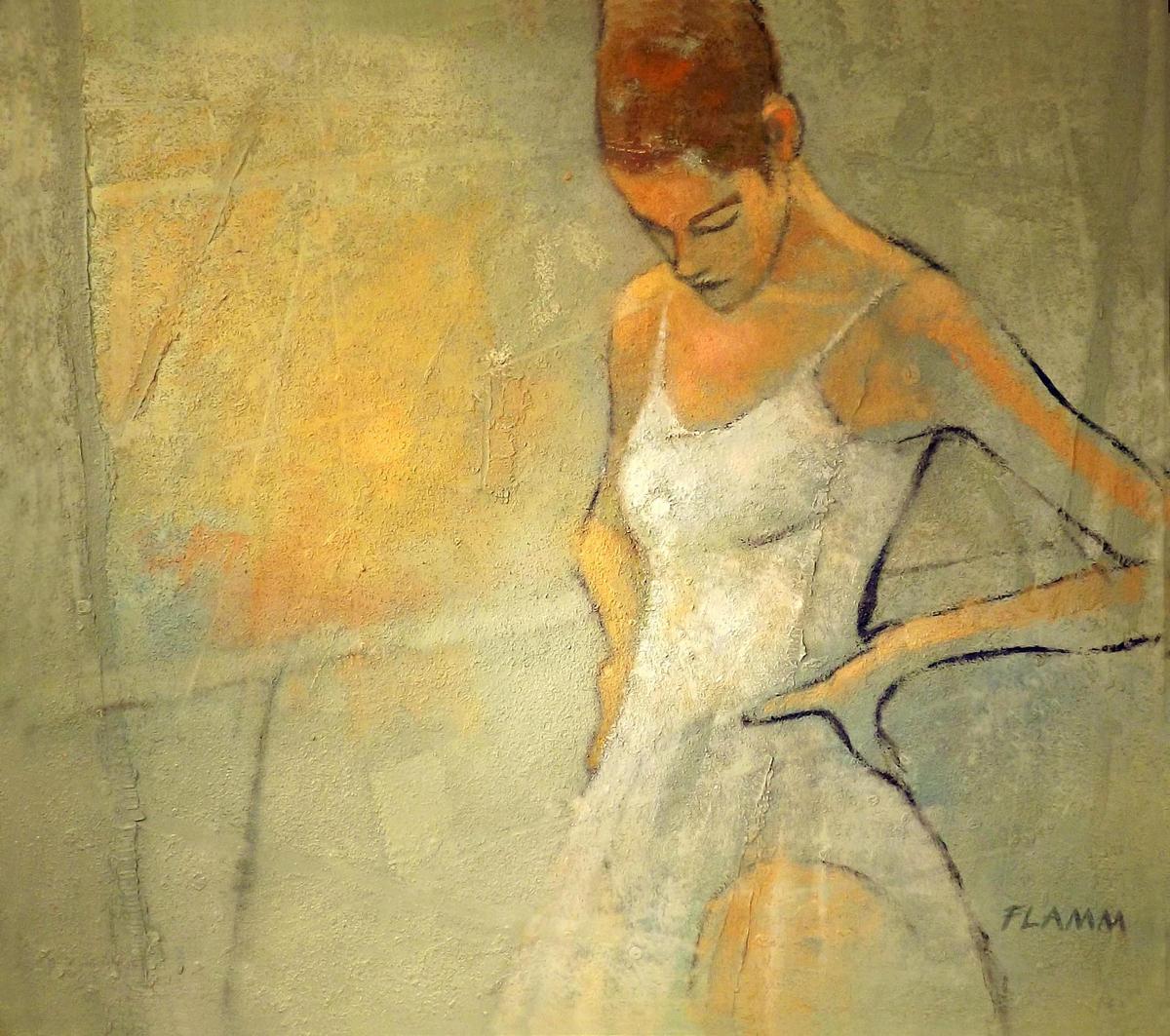
board, which I prepared first by gluing rough burlap on it. I did it in order for reaching deep and living surface under the oil painting. I use brushes but often prefer palette knifes for expressing the dynamics of motion.

My works are embossed both to perceive and interpret a realistic view, I create narratives. It is partly an instinctive process, and I am continually developing the form of expression within representational artistry. I am often portraying individual objects in their specific atmospherically environment on a contemplative way, and particularly fascinated in capturing movement. I think this the connecting link between my different art projects.
Structure, proportions, accuracy; among many other platforms, it is the legacy of the traditional European art studies. My visual perception of surrounding grounded on realism. But artistry is not necessary about to mirror, but to create an illusion of reality. The task is to balance my deeply rooted educational experiences and find a way to a personal interpretation. One of my favorite sentences is the words of Picasso: “It took me four years to paint like Raphael, but a lifetime to paint like a child”. Contemporariness is an individual ability to refine basic knowledge and affirm the ambition of innovatory, also affected the recent world around and by the inspiration of other artist. Regarding affinity with giants in art history, I am enchanted by the sensitivity of Amadeo Modigliani,
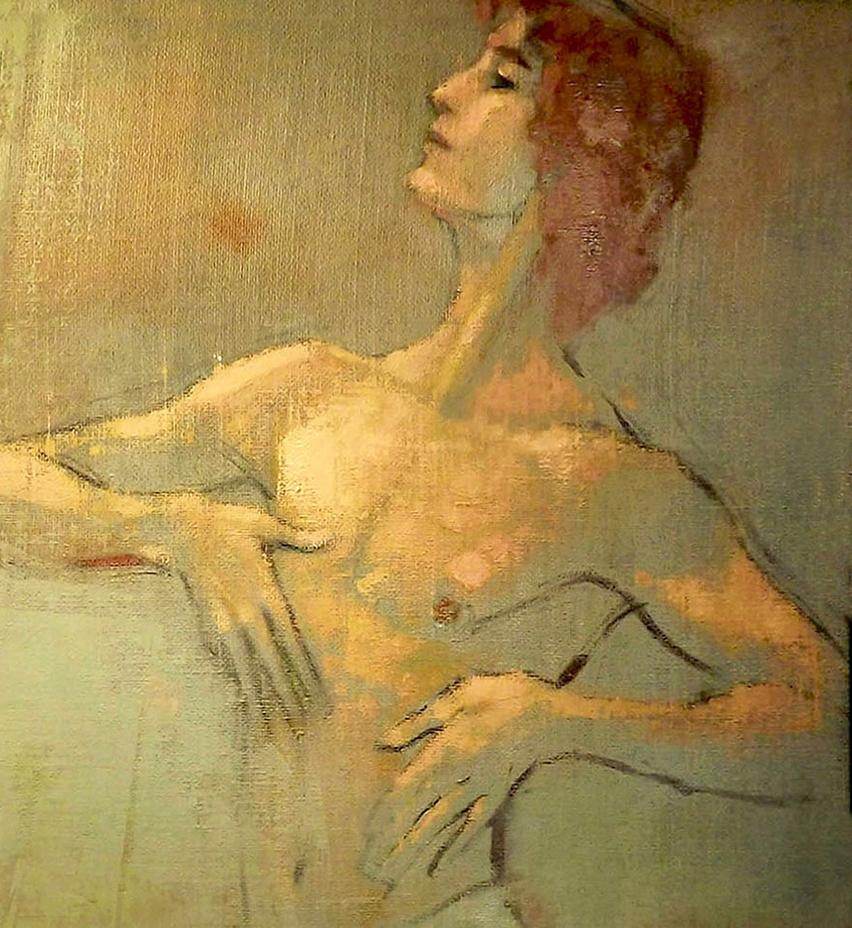

and Edgar Degas for his colors and interpretation the moments of intimacy.

During an intensive work period, I use to meditate regularly for focusing attention and listen to the silence. It is to clear the mind from thoughts and impressions of the surrounding world in order for perceive deeper meanings of the visual. Creating is a multilayered act for expressing yet no existed images, form an unformed vision and manifesting it through a metamorphosis process. Even there are models, objects as inspirational sources, they are transformed to an own personal interpretation. There are other contexts behind the physicality, for picturing thoughts and emotions; I often open the gate of spirituality. The spiritual is an important part of everyday life at our home and my own work as well. Sometime, if one succeeds to visualizing associative dimensions through art, it is a result of balancing reality and the mirror of an inner contemplation.
My earlier Equestrian paintings are focusing on the horse, for me, it is on one of the most beautiful animals connected to human been. It is an ancient relationship with man, in work, in everyday life, in this case in the sports as well. There is an intimate band between human and animal. The series is aiming to initiate a dialog with horse lovers, involved in different branches of horse racing. As an artist, the ambition is to portraying not strictly the object but the particularly environment and
atmosphere of scene. When I working in my studio, the power, graciosity, muscles; the Horse takes over my workshop space. I feel and mediate all the energy to the canvas and imagine the process of sharing the experience with a viewer on another time and venue. As the main focus in sports is often the speed and dynamics, I use to tone down and perceive the
backgrounds in order to lift the movement, which can bring forward the impression to the audience.

The communication between artist and viewer is an emotional process which can be realized by the first visual meeting with the art work. It is like the vision of a music composer can revive through the reverberating in the mind of the listeners in a Concert Hall. This meeting is independent of the distance of time and place; Mozart´s voice is still talking to us today in our

own time. The art has a meaning and potential for involving the audience. By creating a pictured though, maybe posing a question, is affect the imagination of the spectator, awake a reflection, can find an own answer and became a part of the art work. The artist capturing and forming an idea, she/he is a transmitter who communizing through the channel of
association, and at the end of the circle is the viewer as a receiver. I think this quality of dialog can occur through the frequency of artistry.

It is an interesting question I think. The initial dialog through visual communication between an artist and a viewer sholud be continue by

exchanging reflections and thoughts. This communication is valuable for both parts, but for the artist it has an important and inspirating role in the continued development of the creating process. This conversation can be in English, Swedish or Hungarian.
It was my pleasure. At the moment, I am just working on my new project about horses, created in a different shape from my earlier accomplished equestrian paintings. This time I´ll going further on the way of the abstraction process and picturing compositions on a
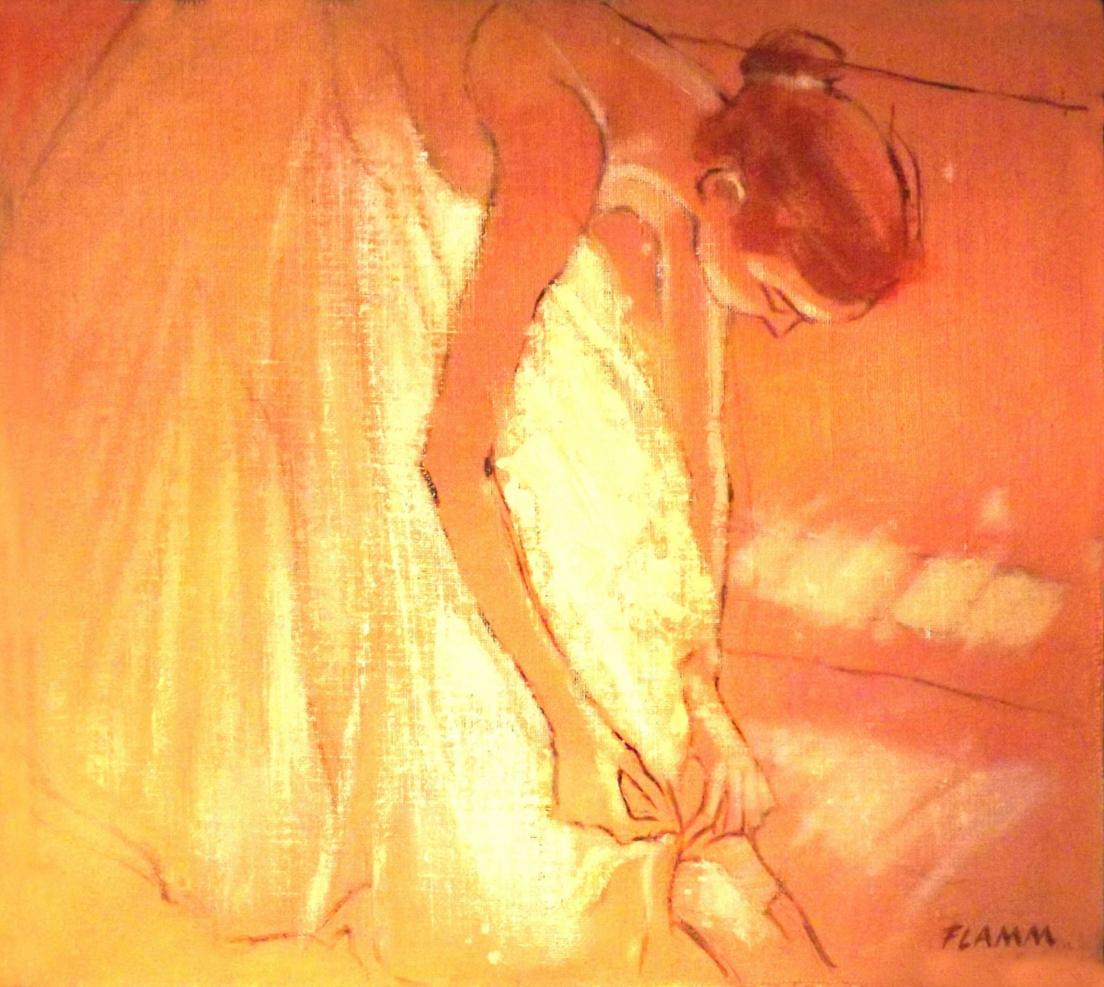
Reflections
stylized perception. I am turning from the interpretation of perspective and thinking in strickly two dimensional.

As a parallel project at the same time, I have to continue to manage of an agent work myself, and looking for different opportunities for exhibiting my recent work; The Stage Door Collection. My vision for displaying this series in
the right context is to meet the audience for example at a foyer of Dance Theater or an Opera House.
An interview by , curator and curator

video, 2013

Lives and works in Newton, Massachusetts, USA
Marcus is the creator of SQUEEZESHOT, a multidisciplinary online project. At its heart is the Squeezeshot Saga, a fiction that may be coming true for us all. The Saga imagines a profound and perhaps likely technological development that could turn everyone’s lives inside out. To develop that premise, the Saga integrates text (prose, some verse) with more than a hundred works of art, photography, video, and audio, all original.
Marcus’s principal venues for SQUEEZESHOT include the squeezeshot.org website, two illustrated ebooks (part of the Saga), and a newsletter, all of them his creations, as well as occasional art and photography exhibitions in galleries and online.
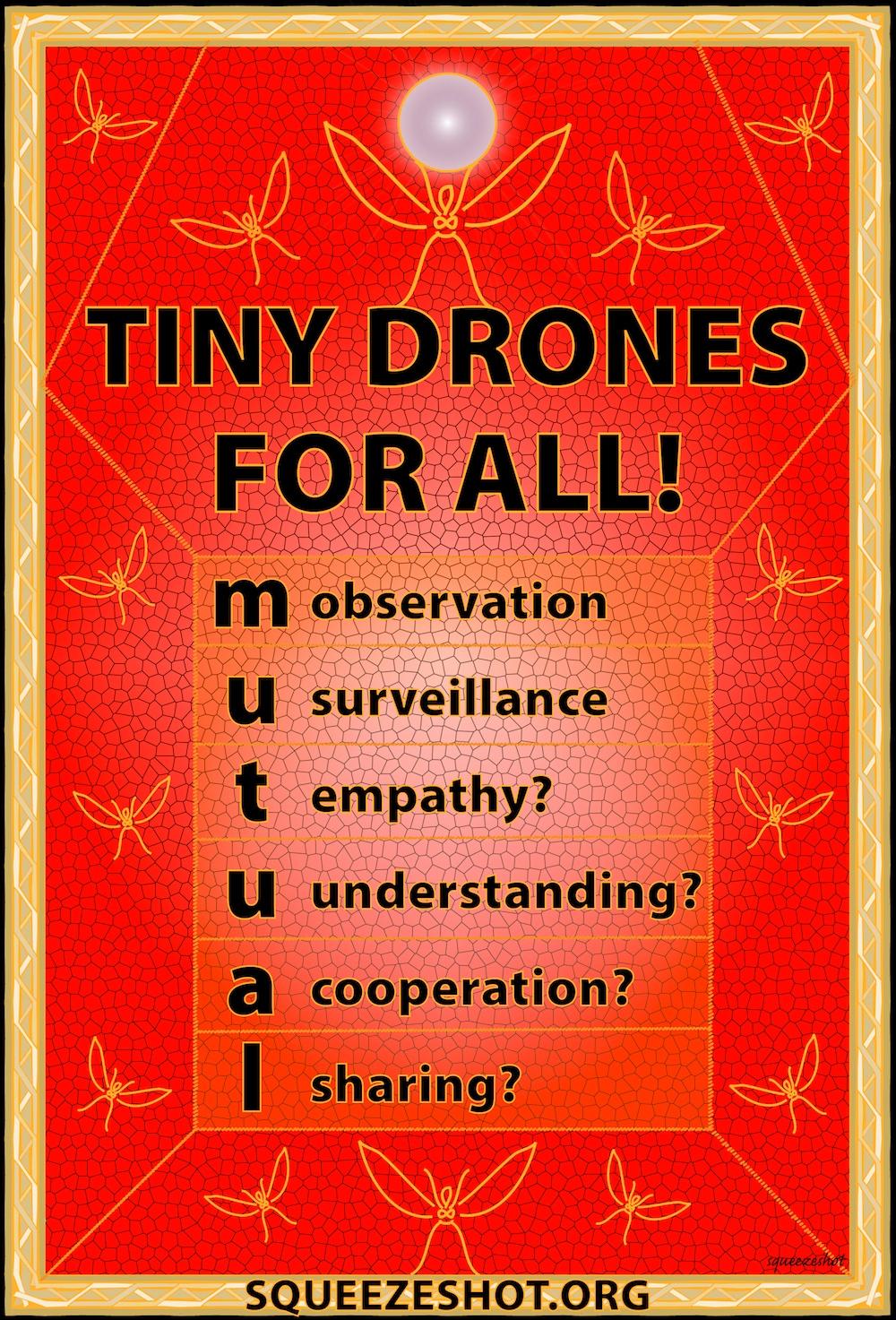 An interview by , curator and curator
An interview by , curator and curator
All of us are both the beneficiaries of and prisoners of our histories. That has certainly been true of me. Like many people, I have done my best to be aware of those histories, both personal and cultural. Their influences are both privilege and burden, opportunity and responsibility. Without them, I wouldn’t possess tools that I use, including my ways of using language, computing, electronic media, etc. Nor, maybe, could I devote as much time to using them.
My studies and other activities at Amherst, especially regarding language, literature,
history, and theater, and at NYU regarding theater and film directing, were among those influences. So was my related work, for some years after that, as an actor, theater and film director, and musician. Like any artist, I am grateful for the tools that those and other formative experiences raising a family, running a business, being a citizen, participating in relationships, etc. have given me. I have used them as well as I can, and shared the results.
I also recognize what those tools aren’t and will never be. In my quest for favorable aesthetic ends, I push them as far as I can, but I have to work with limitations that they that I can’t
 Marcus Parsons
Marcus Parsons
help imposing. Inevitably, they constrain as well as guide my efforts to expand boundaries, think outside boxes, seek new paradigms, etc. It seems to me that no matter who we are, what our backgrounds are, what tools we use, and what quality of work we produce, every aesthetic problem we confront as artists remains somewhat unsolved. That reality proves both stimulating and demanding, pleasurable and frustrating.
The nature and effects of each discipline I use prose, verse, art, photography, video, audio is different. But, as well as I can, I weave them into the coherent, unified outcome you speak of. That outcome, SQUEEZESHOT, is of course the product of one artist of one set of experiences, one sensibility, one point (or non-point) of view.
I appreciate your suggesting that your readers visit my website. Along with my newsletter (about which I’ll say more), it is my main venue for my work. Each year, I am fortunate to share some of my work in a variety of ways, hoping to attract viewers and readers to experience the unified whole that you speak of. For example, I display printed works in nearby juried exhibitions (I live near Boston). I also participate in local open studio events. And I have now had the good fortune of having ART Habens take notice. But my website and newsletter are my primary avenues.
Like most artists, I am pleased to have other people get something out of what I do, no matter how little that something resembles what I imagine when I’m doing it. Of course, everyone is free to experience an artist’s work however they will; such is the eye of the beholder. With that in mind, I have designed my website to allow visitors to choose among various paths
into and through it whatever they feel best suits their tastes and interests. They can read or browse any or all of the 400+ pages of what I call the Squeezeshot Saga. Or, in PRELUDE, they can just read the saga’s first pages,

including the Introduction. Those pages, in prose, audio, and the “tiny drone” images (which also appear with this interview), present some of the saga’s central ideas, and can stand alone, without the rest of the saga.
Or visitors can choose more purely visual or auditory paths, and scroll through the site’s galleries of art, photographs, and short video and audio bits. Many of those visual and sound works appear in the saga, as well, mostly in
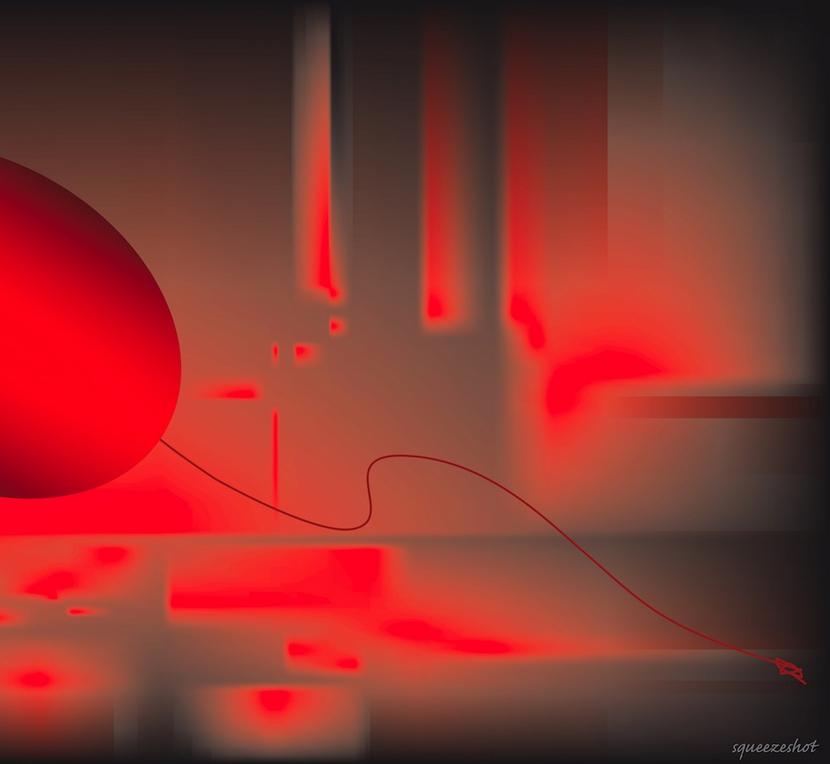
PRELUDE. But they, too, can stand alone, like the saga’s Introduction.
Visitors to the website can also download two free ebooks of the saga, in “Made for iBooks” and PDF versions, to read and view offline.
And either at the website or by emailing they can subscribe to the newsletter I have mentioned. I send one out every month or so. It is an ongoing, living element of my work, and has led one writer

and newsletter subscriber to describe SQUEEZESHOT as a “postmodern saga (that) continues to appear in monthly installments." My process and style regarding SQUEEZESHOT have developed over a number of years. As I

say, they have culminated primarily in what viewers and readers find at my website and in my newsletter. They began evolving in the 1980s, during the Cold War, when I first learned about the U.S. government’s interest in developing bumblebee-sized drones that could be used to spy anywhere in the Kremlin, for instance. The idea of such drones intrigued me. I soon imagined tinier versions, mosquito-sized, and I thought about what might become of our society if we all got our hands on them. To develop that notion, I wrote a novel, and began creating art to go with it. In 2013, I began constructing a website for the novel, the associated art, and the ebooks. I have been refining that site and its contents ever since. I haven’t promoted my work much, but some attention has come. At my gallery exhibitions and open studio events, and by word of mouth and, a little, social media, more than a hundred people have signed up for the newsletter. And since the website’s launch in late 2013, it has drawn visitors from every state and the District of Columbia, and from 111 countries. Web analytics tell me that the visits range in duration from quick stops of a few seconds (i.e., “I have no interest in this site!”) to some that last an hour or more and lead to repeat visits, probably by people who read the saga there or are engaged by the art.
One more thing about style. Artists and writers are familiar with voice or vision, which we develop in the course of our work. As we develop them, our work becomes increasingly focused, potent, and true to our purposes. Like anything any of us gets better at, they are a byproduct of our persistence, close attention, and love for what we do.

I’ve described how SQUEEZESHOT originated when I began to envision the tiny drones and to imagine their implications for us as individuals and as a society. That led me to create and articulate the ideas, images, and narrative threads that readers and viewers now encounter in SQUEEZESHOT. Those have continued to proliferate and evolve.
You have mentioned SQUEEZESHOT’s coherent sense of unity. That is in part due to the development of voice and vision I’ve described. In my experience, the process involved is similar to how an actor discovers and gets into a character he or she is playing. The creative act becomes one of disciplined imagination in service to an evolving vision and voice expressing them, putting them into action, filling them out, and communicating through them. Once you get into that process, it proceeds quite naturally. When it’s going well, you just let it flow. That’s a great feeling. And, as in the rest of life, if and when the process breaks down and the going gets rough, you persist, try new things, find your way back from the wilderness, back onto the track. A certain amount of such trouble is inevitable.
As for the physical setup that I sit down to every day and often in the wee hours of the night it includes a Mac laptop with external drives and a high-resolution monitor, several external hard drives for storage and backup, a camera that shoots both stills and video, an iPhone for some of the video, and a microphone with computer interface for the audio bits. And software, of course, including Word, Lightroom, Photoshop, Illustrator, iMovie, Keynote, Wordpress for the website, and iBooks Author for the ebooks. I work eight or ten hours a day most days of the week. Depending on what needs doing, and what I most want to do, I sit down to write, or to work on the website, or to create and post-produce images, etc. Often a day’s work involves a combination of those tasks.
Yes. For me, those disciplines comprise a single toolbox or palette. As you say, that is essential to forming, expressing, and delivering SQUEEZESHOT’s ideas. Naturally, they themselves, both independently and as symbiosis, become part of the outcome, aspects of the ideas, media as message.
I worked for a decade as a singer, songwriter, and musician. One artistic/technological project I developed and managed for several years back then was a phone machine and service that I called Phonesong. (At first, actually, I called it Phonestonesong, but I soon decided that was a bit weedy.) It allowed people to call and listen to my songs, which I changed each week. It got some media attention in Boston, and some around the U.S., and for a while received 15,000 calls a year.
SQUEEZESHOT is a successor to that. I think that in all our lives there is a degree of synesthesia at work, each of our senses impacting the others. In a more or less subtle way, we hear what we see, see what we hear, verbalize to ourselves what we think and feel, think and feel what we verbalize, and so on. About anything that we experience, our perception and consciousness speak to us in one voice and, at the same time, in many voices at once. They sing to us solo and in chorus, in our own voice(s) and in the voice(s) that we hear around us the music of our spheres. Not that there aren’t differences between how sound and vision communicate to us, and in how we use them to communicate,
but there’s also that commonality. The two entwine with each other, and enhance each other, enlarging our experience.
I do hope that my art can make people more aware and inclined to bring about change. We all need some of that; we benefit from it. However, I have my doubts about what such change can amount to.
We are social animals. The thread that connects us to each other is always there for us. It is intrinsic to us, and essential to us. Beyond that, it presents, and represents, intriguing possibilities that give us reason to be hopeful.
We do what we must with that thread. As a species, we have done enough, so far, to
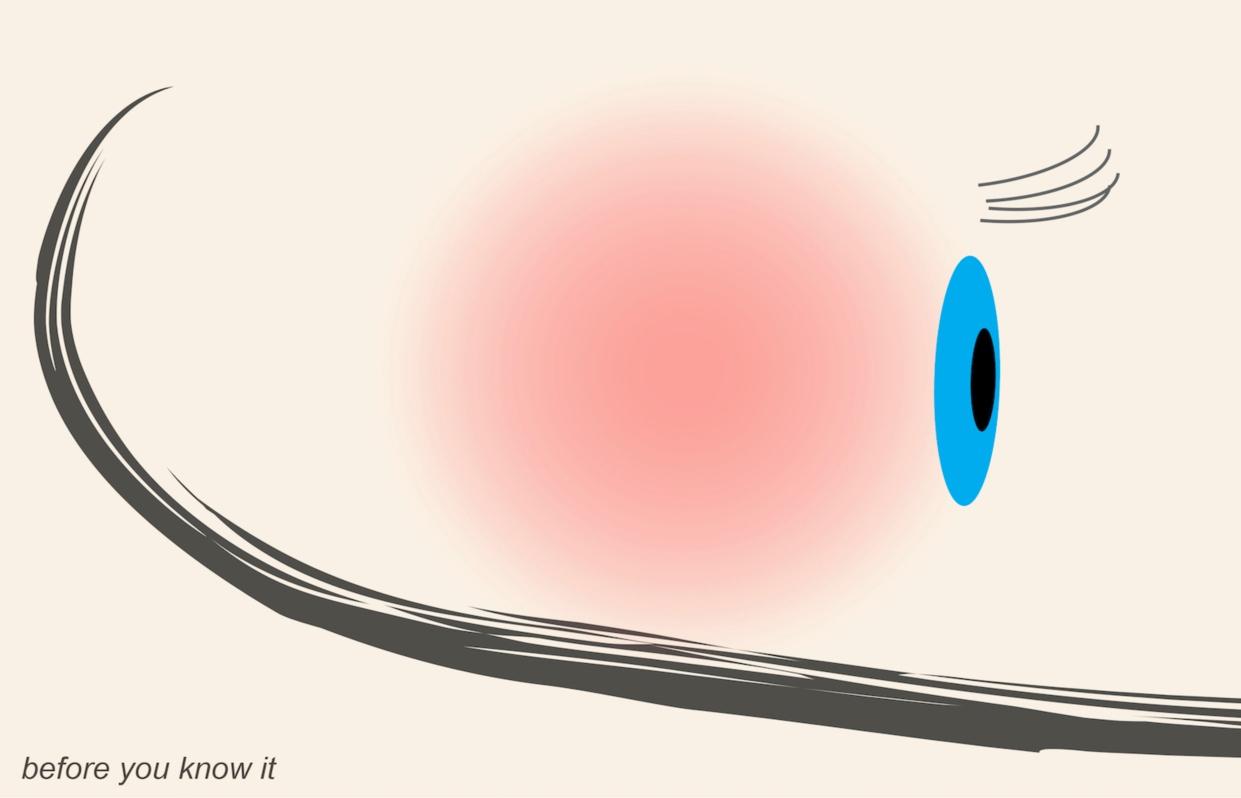
enable our individual and collective survival. We also do what we can with it, alone and together, to pursue our advantage and happiness both as individuals and as part of larger groups: families, communities, businesses, nations, etc. However, I don’t know to what extent we can make more of that thread than we already do for instance, to fulfill our ideals about cooperation, sharing, peace, mutual love and respect, equality of means and opportunity, etc.
I explore that question in some depth in SQUEEZESHOT, particularly in PRELUDE. For one thing, the tiny drones premise puts the matter to the test. I like imagining the augmented experience such drones would
bring us. If we were to use them to go anywhere and observe anything we want, it could create a universal social transparency, enabling all of us to penetrate at will all (or many) walls and boundaries physical, geographical, psychological, cultural, political, spiritual, mystical, etc. Ultimately, that transparency might reach deep within our minds and bodies, further enabled by scientific means, mostly computer-based, that are already developing. That’s not to say that I think such a development would be a good thing. It could be horrific and destructive, or a transitional development toward the demise of our species and the further ascendancy of our machines. Or ?

Thinking about what our senses of ourselves might become in those circumstances, as individuals and as groups, communities, nations, societies, a species, etc., fascinates me. I imagine that in all of those contexts, to a great degree, we would have to reinvent ourselves. Some such outcomes may be inevitable, given humanity’s current inclinations, including widespread uncritical use of social media, increasing surveillance all around us, more relaxed standards of privacy, changing views of intimacy, and the directions we are taking in developing and using technology, including drones.
Which might or might not turn out OK. There’s no being sure. Such, always, is the future. The fiction I have created about one aspect of our future is speculative. But I have little doubt that some of the consequences I have imagined would be profound. Also, as in every future, more such consequences would arise unintended and unanticipated.
As creatures faced with our mortality, who possess genes bent on surviving from one generation to the next, and who for now, at least, cannot reproduce alone, we cannot ignore the thread that ties us to others. We must employ it, take advantage of it, try to benefit from it. With varying degrees of connection to it, we plan, explore, toil, and move forward in some ways, toward what we think of as the future. That necessitates buying into what Einstein termed the illusion of time, which enables us to sustain a sense of hope, incentive, optimism, achievement, and what we consider to be progress. Such behavior is in our nature and always has been. It’s not likely to change.
As far as the arts possessing some ability to increase people’s awareness and bring about change, I like to think that it can, same as many of us believe that positive change can be brought about in other spheres: political, commercial, technological, and so on. But such is hope, which springs eternal and never gets entirely fulfilled. So it is for all of us. Like
everyone, I am just someone who gets on with his life and occasionally manages to say or do something that helps other people.
The development of tiny drones seems inevitable. If it is inevitable, then imagining their coming into everyone’s hands has merit at least, for now, as a thought experiment. Questions that the Saga raises about that possibility could become significant. For instance, if tiny drones and similar devices become common, what will be the ideal outcome? Who will use them? Who should be able to use them? And for what purposes? Those questions may at some point have serious implications social, economic, political, moral, etc.
Of course, like most speculation about the future, there’s no telling what will really happen, but it seems useful to speculate. It is probably unlikely at first, anyway that tiny drones and similar devices will become tools of everyone at every level of society. More likely, at first, they will be used exclusively by the wealthy and powerful, including governments (i.e., law enforcement and intelligence agencies, the military, etc.) and big businesses. But if, as with most new technology, the costs of buying or making them come down so that large numbers of ordinary people get hold of them, something like the universal transparency the Saga imagines may develop, from the bottom of society as well from the top. That would be portentous.
As for how the concepts of the real, the authentic, and the imagined play out in my works, the Squeezeshot Saga is fiction that pretends to be nonfiction. It explores an intersection of the real and the imaginary, where it can illuminate but not resolve issues that arise there, such as those I have mentioned.

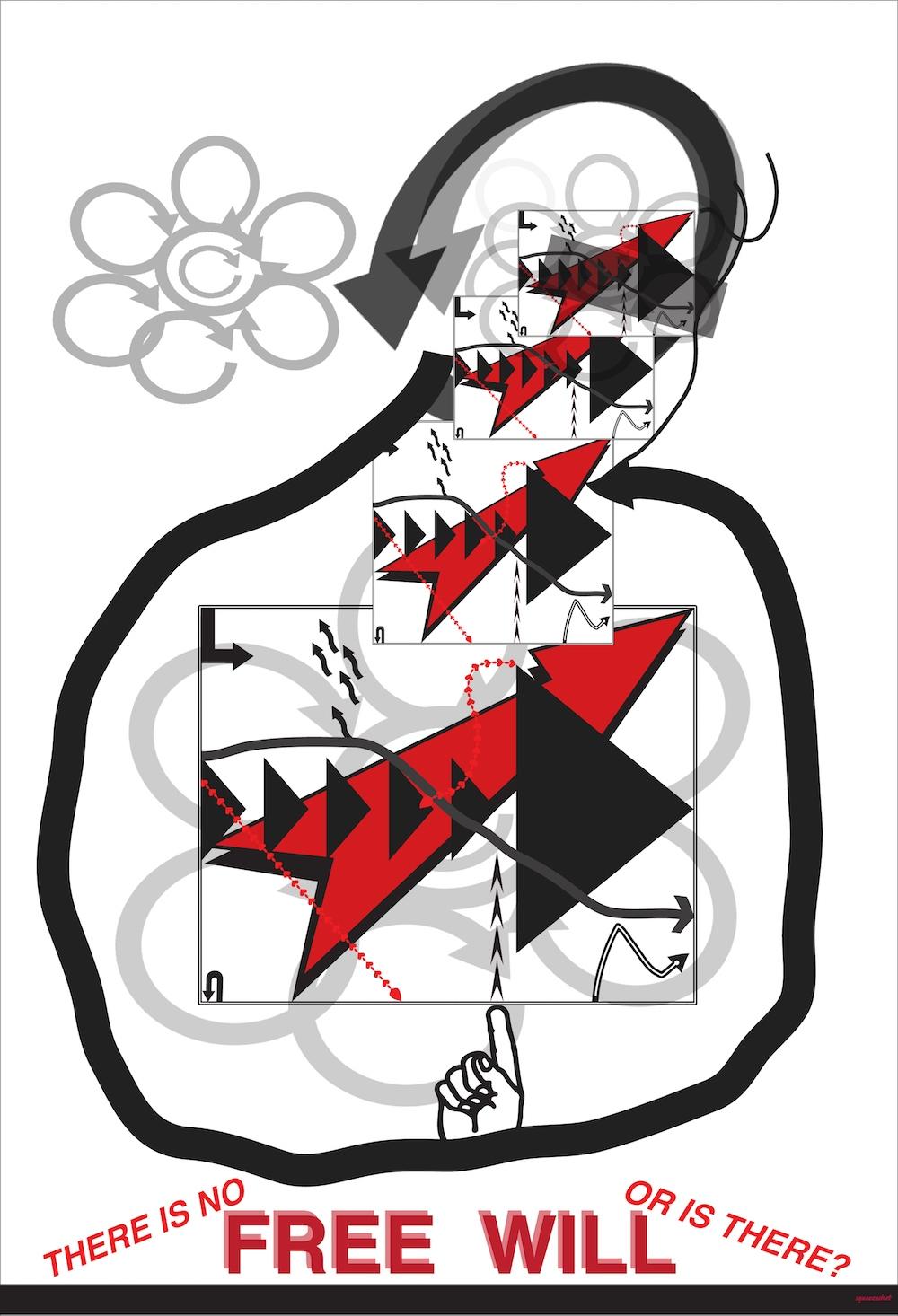
Consideration of what is real, authentic, and imagined is a particularly fraught topic these days. Many people’s beliefs about what is real, authentic, imagined, fake, truthful, good or bad, etc. are experiencing seismic shifts. That is unsettling to many of us, producing increased uncertainty and skepticism, and bringing us greater challenges. For some of us, perhaps all of us, it may also be producing more openness to diversity, complexity, and contradiction, and to the blessings of life’s unavoidable fluidity and confusion.
Those seismic shifts are coming at us from many directions. They’re loosed upon us by the words and deeds of demagogues, rabble rousers, ideologues, and partisans of every persuasion. They also come via the beliefs, biases, fears, and concerns of millions of upset people. More fundamentally, they are delivered to us by our changing socioeconomic, political, commercial, technological, climatic, moral, spiritual, artistic, philosophical, and other environments.
Many of us are realizing that we make our beliefs; that our fictions are us; that many of our certainties are more uncertain than we thought; that anything we might consider real, true, or authentic is to a great extent conditional, a matter of shared conviction and consensus, or of illusion, a product of our imaginations.
That isn’t necessarily a problem. Many of our fallible verities and illusions are useful to us. Many are so essential to us that we couldn’t survive without them, or might not, or at least would be worse off without them. And we are used to them. Some have been useful to us for millennia, such as the supposedly factual wellsprings of our religions and divine laws, our narratives of national and ethnic origin, and other myths and glorified histories. Some of them may even have been with us since our origins as a species, and perhaps in our precursor species.
Those fallible verities and illusions may include our illusions of time and space (we can’t have
one without the other). Similarly, they may include our conviction, or sense, that we and our worlds are real, solid, objectively factual. Instead, those phenomena may be chimerical projections of ours; they may be our own creations, unique to our kind, refined in the course of our evolution to suit our needs and nature as humans, to help us perceive and understand as we must in order to survive.
That’s quite a show that may be unfolding for us, on our many stages. I think of SQUEEZESHOT as one wee part of that show. I also think of it as a microcosm of the whole, as both part and parcel of what we think is real. To me, whether or not any of its fiction ever comes any truer than it already is is quite immaterial. It is just a set of notions that, for the time being, some people find intriguing, thought-provoking, useful, and some fun.
I think about that every time I visit a wonderful museum, and every time I see materialized art anywhere, whether it’s a sculpture standing on the ground or perched on a plinth, a painting or photograph hanging on a wall, a snapshot pinned to a bulletin board or held by a magnet to a refrigerator door, etc. And I think about it as I write pixelated words into my laptop; and as I click through images there of highresolution art, or see some on an HDTV; and as I capture images on my digital camera, postproduce them in the digital domain, and share them as bits via my website and email newsletters.
From the start, art has depended on current technology for its existence sticks of charcoal, gobs of clay, colored goo. These days, new media, immaterial as they mostly are, are quickly bridging the apparent
dichotomy you speak of. The rate of construction of those bridges today’s mutual assimilation of art with technology is mindblowing, disconcerting, and accelerating.

As for how technology is affecting the consumption of art, I think it’s pretty radical. It’s generational, too, as older folks more wedded to material art lose influence and die out. Contemporary art, increasingly
immaterial, and typified by images that reflect today’s world, is becoming more popular; traditional art less so. Meanwhile, museums and galleries are increasingly becoming repositories and exhibition spaces for
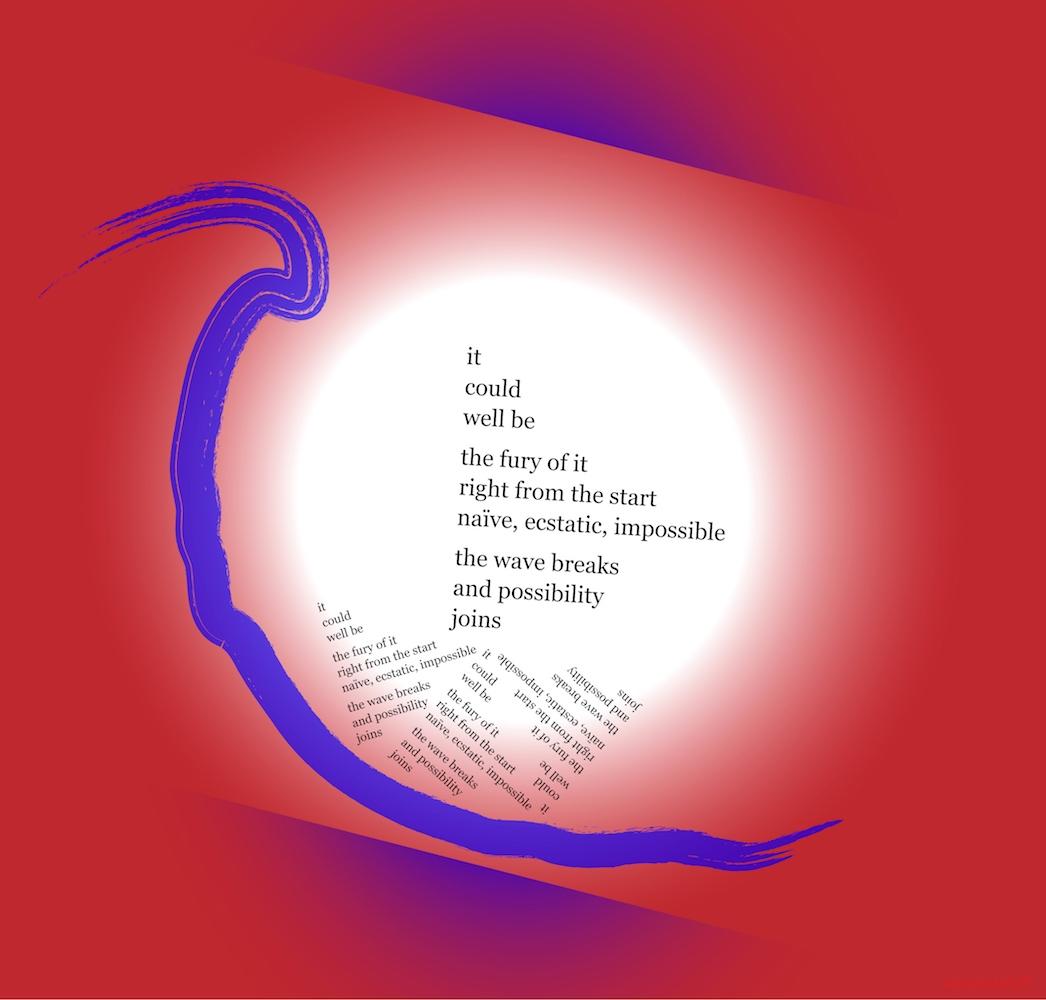

immaterial art, as in the video and other onscreen and virtual galleries at the Tate Modern, the New Museum in New York, and elsewhere. And homes and schools are filling with high-resolution screens, fast data links, and art that is backlit and broadcast, projected, or shared from computers, tablets, and smartphones.
I don’t expect museums and galleries to vanish; they serve many purposes. There will always be a good number of people, like me, eager to see material art from every era, who have a keen sense that all art, regardless of its era or technology, is contemporary and important. But for the most part, I expect, in social settings like museums and galleries, but mostly in homes, cars, on trains and buses, and anywhere else, people’s experience of art will be one-on-one with their personal screens. Many people’s experience of art, including mine, is already like that. I think that’s fine, especially given the quality of our screens, the amount of good art available to us on them, and the increasing availability online of compelling images of material art, as well.
chase, to get to us more personally, with in-ourfaces-and-minds directness from screen to self. To some extent, of course, art has always done all of that. But so much art these days can be communicated at the speed of data, then viewed on high quality devices; and so much of it delivers content that is incredibly diverse and referential; and so much is available to so many of us in so many corners of the globe; that it is fair to speak of a new sensibility, as you do in your question.
Below are a few other aspects of how the qualities of new media, and the flux of current conditions, are changing the role of the artist.
Obviously, new media are made more out of bits than is traditional art, and less out of atoms. They occupy a different kind of physical and mental space in our lives, residing as they do in devices that we think of and use in particular ways. We use those devices with some expectation of experiencing something new and fresh, often newer and fresher than we would expect of traditional, less multidisciplinary art. We also use them not just for consuming art, but also for many other purposes. That changes our sense of what art is. And we use them in all kinds of locations, some not congenial for experiencing art. We also pay new kinds of attention to them, often with much openness and engagement, but at other times more casually, hastily, susceptible to distraction and interruption.
We know that images, sounds, and words are easy to copy, sample, borrow, or steal, and then to rework, remix, recontextualize. Our sense of what artistic content is, of where it originates and what it is that we are really seeing, has changed. For instance: Is that image
Much new art these days is more adaptable than in the past to the changing moment and to the incredible number and diversity of people who view it. Also, viewers are bringing more inclination to recontextualize it to suit their immediate realities, and to use it to orient themselves to a rapidly changing world. In some ways, immaterial though the art may be, that adaptable quality enables it to cut right to the
Photoshopped or not? Is what I am seeing a special effect or the real thing? Our uncertainty about whether a work, or a section of it, is original or copied from elsewhere changes our view of it. Any of those factors may diminish our satisfaction with a work. Or, on the other hand, our sense of a work’s wider frames of reference may please us and increase its value to us.
We may be more aware these days that each time we look at a work, its context (social, political, cultural, personal, etc.) has changed some since it was created, or may have. There’s a saying: “We don’t see things as they are. We see things as we are.” In today’s world, as we consume the vast range and amount of media available to us, as we become more aware of the great variety and complexity of people’s cultures, personal backgrounds, experiences, values, etc., more of us are aware of what we bring to our experience of art, including our histories, cultures, tastes, biases, opinions, and memories. We are more aware of how what we bring to experiencing art colors and determines our responses to it. We are also more aware of the degree to which our tastes, biases, etc. evolve over time.
But art can play less explicit roles, as well. All art expresses values, and offers perspectives and insights into our humanity. Often, that is political enough; art can do more in that way to support and protect what needs protecting, and to promote desirable change.
That said, when a situation calls for it, as may today’s circumstances at some point, I feel ready and willing to create work that is bold, provocative, offensive, or outrageous, even if its influence later proves to have been negligible or even wrongheaded. At such times, we must do what we believe is right, come what may. Such is the activist beast that sometimes is us.
As an American disturbed by the advent of Donald Trump, by his popularity and by the hateful threats and dangers he has brought to the fore, I wrestle with that question. I have spent hours working on highly political images, some pretty disgusting. I sometimes think and hope that they might make some difference toward the positive. But so far I have mostly ended up keeping those images to myself, doubting their usefulness.
Art can play a variety of roles in our cultural and political conflicts. For one thing, it can offend and provoke. Sometimes that’s good; few respectable bills of rights advocate a right not to be offended, and in certain circumstances giving offense or provocation can be necessary and positive. On the other hand, often, art persuades and accomplishes more when it speaks softly. Also less provocatively, art can be used as propaganda for the like-minded, to sing to the choir, to support one’s fellow partisans.
I love what I do, notwithstanding its challenges. I would do it even if there were no place to show it and no audience to appreciate it. Its intrinsic rewards are great. But I am a human being much like any other. Inevitably, my work expresses something of people’s common nature and circumstances. I have found that some people who see or read my work find something of that commonality there, and feel that it is of some value to them.
As I work, then, part of me is aware of the possibility of communicating with other people. I often find that when I use language that means something to me, whether it is verbal or visual, it will mean something similar to them. All of us have things about our lives that others might find helpful to know experiences, perspectives, lessons learned. We also have ways in which we believe things should change,


and perhaps can change. As with anyone, things that I think may be worth changing strike some other people that way, too. I like to encourage those people, if they are viewers and readers of my work, to as you put it move beyond spectatorship, perhaps to new awareness of their possibilities, both as individuals and as parts of larger communities.
Of course, when I do that, there are limits to what I can express, and to what I can do that might have significant meaning to others. Like any artist, my potential audience doesn’t include everyone. It can’t. As with any artist, people who appreciate my work tend to have a cultural substratum not unlike mine. Often, they and I share certain kinds of literacy and fluency, visual and verbal. We have had similar life experiences, and have arrived at similar understandings. We possess similar knowledge of the world, and similar values.
Like anyone, then, I am able to communicate some with other people. As opportunities permit, and when my works seem suitable, I reach out. As we all know, sharing one’s work may serve not only oneself but also others. So, I do what I can, using languages that I know, visual or verbal, to suit each situation. For instance, when I submit work for juried exhibitions, I submit pieces that I think will suit the exhibition’s theme, the gallery’s clientele, and the juror’s taste, and affect them in positive ways. When I post new works or fresh revisions to my website, or create the latest newsletter, then, too, I think of who I am directing them to and how they might be received. The audience always matters, whether it is an audience of many others or an audience of one sometimes just me, the artist.
As for what my future projects will be, no doubt I will continue to build and refine the SQUEEZESHOT(.org) website, and to supplement it with the newsletter. (Shameless request to readers: Again, if you might enjoy the newsletter, please subscribe. You can do that at the website or by sending to ) I’m sure that I will keep on with my art and photography, too. I have acquired some interesting new graphic arts tools to work with.
Also, as always, I have more to say with words. Years ago, I imagined and drafted more of the Squeezeshot Saga than I have completed. It develops many of the ideas I have mentioned, and further fleshes out the Saga’s two principal characters: Vassal Squeezeshot, who is the fictional inventor of the tiny drones, and The Reverend Professor Henrietta A., the fictional academic who is Vassal’s longtime companion and the fictional author and artist of most of the saga.
As for building an audience, like most artists I would like my work to reach any people who might want to read it and view it. Reaching those people isn’t easy, of course; I face the usual challenges of discoverability. I have considered seeking conventional paper or ebook publishing, but I have realized, as you have pointed out, that there is a certain wholeness to my work as it is. It constitutes a different kind of “book”: virtual, multidimensional, dynamic, evolving, etc. So, I will keep it growing, and will keep taking advantage of opportunities for sharing it.
Thank you again, abens, for all your work. And thank you, readers and viewers of this interview, for your attention. I hope that you have found it rewarding.
Thank you for your time, questions, and sharing of thoughts. I have found this interview very enjoyable.
Lives and works in Vienna, Austria
Laurent Ziegler (MA) was born in Vienna, Austria. Laurent focuses on photography, installation and performative work. He studied Political Science at the University of Vienna and completed educational programs in contemporary dance and film. His work is internationally represented in group and solo exhibitions. Laurent has several years of experience in teaching visual arts and contemporary dance. In 2009 he initiated an 'arts in education' program for photography in Sri Lanka (One World Foundation). Laurent is a current member of Künstlerhaus Wien and Bildrecht LLC.



Dance photography opened up to me when I discovered contemporary dance. I attended a studio showing and immediately fell in love with what I experienced - physical touch and encounter, moments of ephemeral beauty, new territory to explore and dive into. In the beginning I documented
dance on stage or in reherarsals and felt connected to the performers, breathing and moving with them in sync. At some point though, I lost interested in dance photography, it didn't touch me the same way it did initially. I became more aware of the person behind the performer, the inner story, and less of the style of a certain move. Back then I was a contemporary dance student myself and discovered Butoh, an avant- garde performance art in postwar Japan. I had a truly inspiring teacher, Ko Murobushi, and learned to see and to witness the unseen, to go beyond shape and judgment, to
 Laurent Ziegler
Laurent Ziegler



experience my body as a landscape and my senses as a whole, including all that cultural up-bringing had closed off in early days. John Cage wrote in his Lectures on Something and Nothing that "[...] the important questions are answered by not liking only but disliking and accepting equally what one likes and dislikes. Otherwise there is no access to the dark night of the soul." Butoh opened up doors to further dance-related practices. I would describe them all as very relevant life experiences - just as
being a student of political science shaped my understanding of the world and the way narration unfolds, takes place.
Thinking about cultural substratum I would say, it's a conscious way of perception. Artist Mircea Eliade commented that "... consciousness is impossible to imagine without a meaning on man's impulses and experiences. Consciousness of a real and meaningful world is intimately connected with the

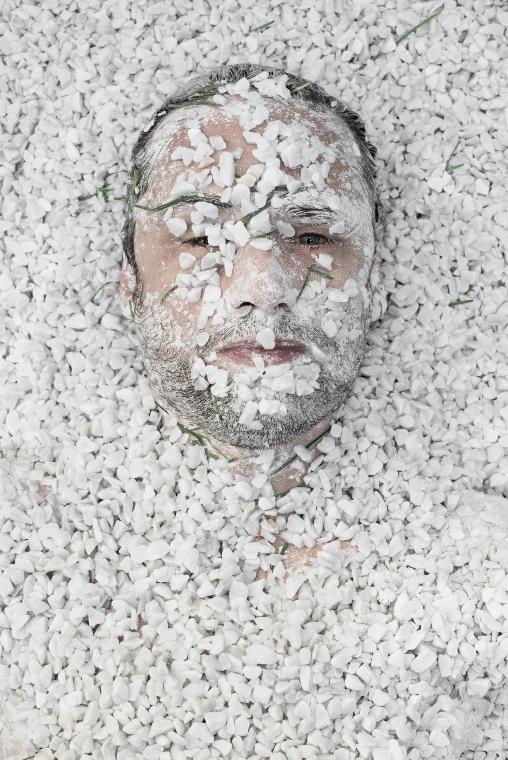
discovery of the sacred - in short, the sacred is an element in the structure of consciousness and not a stage in the history of consciousness." The modern world lost a great deal of its sense for the sacredness and the ability to witness the world as a single, breathing entity. Everything within our experience is alive, has some kind of essence that can be reached through human thought. Allow me to quote another artist, Bill Viola, who said that "[...] thought is the animator.
That's a principle of nature, that's not a property of the art world".


The aesthetic problem, does it relate to how we perceive and feel attached?
Viewers are welcome and encouraged to perceive art freely and openly. Perception is followed by attachment, though when we shift to judgment. I understand judgment to be a powerful weapon for creating suffering and yet we live in a world that shifted to a real-time like/dislike universe. The characteristics of the digital age - yes or no - and our


focus on the visual sense triggered this shift from a primarily descriptive way of narration to one that is overly simplified and poor in narrative substance. While our generation accumulates an unprecedented amount of data, it seems difficult to open up the field of communication and share a comprehensive sensual experience.
Norwegian philosopher Karl Ove Knausgård said in this regard that art thrives and grows through exposure to

the unknown, the virtual. Living in a world that continuously analyses and explains mysteries, that turns the unknown into a familiar playground, the whole world is becoming one elevated piece of art. For Knausgård this shift propels our desire for "reality" and puts the arts into turmoil. But doesn't it all start with oneself, with our own faithful approach to art? I experience art as an expression of the heart, a gracious gift from and for people. It helps me ignore the whole issue.

In my work I explore the outer landscape with my senses, yearn for modes to connect with the inner self, with the image as the key agent in this exchange. I search for ways of re- living, reembodying memory that is within my boundaries of perception. What senses are involved and in what way is perception experienced and communicated? What is a landscape or better - what is not a landscape? If I refer to a memory based structure, then, what is memory? I often return to such questions, you might call it my starting



Closeness

point or set up. It usually starts with an idea that is less visual and more a feeling, a touch. Then I look for a structure, a means to bring across what I have in mind. I believe that everything we experience is connected with us and our awareness of it, that sensitivity defines our place in this world.
sensual experiment to surpass that what, both me and Georg, are familiar with. Our exchange relied less on words but on witnessing each other and locating on our inner maps the next steps to follow, an intimate dance on the horizon of focus and haziness. Collaborative processes like these are precious to me. The result is unforeseeable and there is something larger to open up to - an event constantly changing, living and growing.
It all started with the idea to arrange the body of Georg as the underlying ground for serial choreographic arrangements and superimpositions of organic substances, which provoke formal bodily extensions, perceived as inner and outer landscapes. We started with grass, then stone, followed by water and sand. Organic structures are in a constant state of "transitoriness" and even the perception of inner and outer landscpes is temporary since, once our bodies decease, the inside turns into what we are surrounded with. Our aim was to show the vulnerability of the body, a
I perceive my occupation in the visual arts and dance as an inner practice that allows me to open up to the environment I am in, to experience life with all senses and to produce work that reflects this ancient wisom that we all, inherently, share. When I exhibit work I sometimes see the audience moved by what they "see", without having words for it. For me, it is again a sacredness that is not gone but often stored away from our conscious mind. Working in the arts for me means addressing the gap between us and nature, these ancient paths that are nowadays rarely experienced and shared in the community. The concept that objects can acquire power, that a human being's inner thoughts and impulses can
have a residual effect on the outer physical world is of archaic origin.
I agree with the given quote. I seek collaborations to exchange ideas and move some other place. It is also a good way to stay open-minded and transparent, not to get lost in one's own ideas about the world. When I look back I always focused on communication, weather it was writing, dance, choreography and later on photography and video work. The tools are different but what I enjoy is to embark on a journey, be part of a process and really surprised, speechless, out of breath.
I find it fascinating that a photo can bring across the sensibility of a space, a person, this silent, delicate fabric that makes us gracefully tremble and shiver for a subtle moment. It is more making than actually taking a photograph for it demands the photographer as a whole to be present and in touch with the matter. I understand photography as an essential part of contemporary art and yes, the style or technique is not the point. Art is an inner process and photography a powerful, most versatile medium. The Ko Murobushi series comprises of photos that were taken when I was actively involved in dance. Ko died in 2015 and I was given the opportunity to contribute to a farewell celebration with an installation that consists of river stones positioned on the floor as a single structure as well as mounted up in the air on thin cotton strings, mirroring in number and shape its counterpart. Bright natural fabrics cover the stones and the surrounding environment, referring to a Japanese rock or Zen garden. Such structures aim at imitating the intimate essence of nature, not its actual appearance. My intention was to provide a space for visitors to hold in for a moment and touch an elevated space, to perceive gravity and a very physical reality as well as the supernatural, unexplainable that surpasses the known. The medium I work with is not the point for me, but rather the intention behind, the approach to it.


I believe this questions is already answered in 10) Over the years... Allow me to say something about the photo book "A Sea of Being".
"A Sea of Being" is my first photo book on Butoh and was published in 2015. I collaborated over several years with Mirjam Morad, a local dancer, performer, poet. The common ground in our artistic endeavor was the act of situating ourselves inside a landscape and dealing with the relationship of the individual towards spatial patterns, with the localization of physical and sensual perceptions as imprints on a map, integrated into our experience of the outer landscape. What I was hoping to gain from this project was a consciousness in how to bring across where I am now.
Working with young people is a great source of inspiration and allows me to constantly question my own believes and assumptions. The arts in education program in Sri Lanka uses photography as a tool to train life skills that find little support within local educational structures. The courses are designed in a workshop like setting with exchange and critical feedback, take place every day and last for three months. My aim and the aim of my fellow colleagues is to make participants aware of the value of their individual skills in all matters and to provide means for creation and expression. In my opinion, awareness is about the way we perceive moments, places and ultimately light, how far we are willing to take in information, to capture and to share.
When I teach visual arts at the New Design University in Austria, I focus on the human body in a spatial context, our individual senses and in what way perception is experienced and communicated. I realize that my students have a difficult time connecting with these thoughts, to ponder "consciousness", to reflect on their behavior in the digital age. We spend a great deal of time outside in the woods and I offer exercises to get in touch with living matter, to be aware of continuous processes running through every single cell inside and outside of the body.
I don't think that much about the audience's reception - it would not allow me to be open in my work process. The theme of an exhibition can ask for certain structures or elements to be taken into consideration - and that is perfectly fine with me, sometimes even welcome since limitations often make it easier to move on. However, once the work is on display I am thrilled and excited to meet the audience, to learn about the response of the viewer. I create my photo work with and for people and feel blessed that I have the opportunity to do so.
The protagonists sit in black clothes in front of a black wall, I use an upright picture format and a single lighting source. "Closeness" allows the exploration of touch, from a rather physical quality to the one felt from the inside. Various layers of interaction create a complex understanding, an everchanging mode of conduct that I accompany and capture as a photographer. The photographic images hold art historical references and open the floor for a discussion on physis, sociopolitical perceptions of life and a spirituality that has been anchored and maintained in the applied arts over centuries.
I began working on this series in spring 2016. Ahead of the actual production period I went through a process of questioning the way relationships are structured as well as looking at my own family history. Over time I became aware of the political aspect of "Closeness" and raised questions about heritage, belonging and how to locate people in a national as well as a geographical space.
One of my future projects that I like to mention is already in the making. The photo series " "Closeness" examines ways we are connected with each other, how we reach out, ask and receive, approach or leave one another, in what way ties exist, just discovered or experienced for years - qualities that are primarily visible to the inner eye. Artist Rivka Rinn said in that regard: "That what the eye doesn't know, it sees." On display are two people.
To put it in different words: The interaction of diversity and the diversity of interaction is what I try to capture in my work. I wish to bring across that barriers, physically present or just in people's minds can be overcome through our individual connectedness or closeness.

Lives and works in Turku, Finland




Hello and thank you for your interest in my work! I have studied art quite extensively from painting to photography and site-specific art. I loved being an art student. When
you're a student, you are given varied and exciting projects and you are encouraged to constantly try new things and experiment. It's freeing. That's something that can be more restricted in the work life after graduation. My studies have given me the basic tools and processes I use while working. I also
Tessa Ojalahave a degree in design, and design thinking is something that can be utilised in art projects too. For me there's no need to draw a line between my work in fine arts and my work in design, they're all creative processes.
I got my first set of oil paints when I was about 10 years old and started to learn how to paint with them. Later I went to study painting in art school, but I was curios to learn other techniques like sculpture and photography too. My way of self expression has always been the visual kind.
The process of starting a new project always begins with an idea. Sometimes ideas come to me easily and almost fully developed, but often it can take some time and I just have to wait while the ideas slowly develop in my mind. After


From the Strange Days series

getting the idea the rest is trying to execute it. The end result can be different from what I was planning at first, the work processes are variable and I want to leave room for surprises and chances. I often have many projects running simultaneously. I'm a bit impatient person, so hopping from photography to oil painting or making a short film suits me. Sometimes I wish I would be interested in one thing only, in example painting or photography, so I could really concentrate to that technique, but I find so many things interesting and get easily inspired. If I don't get to finish a project efficiently and in a reasonable time frame, I have a bad habit of never finishing it. The moment has gone and I have already moved on to other fresher ideas.


I have always been interested in weird and unexplained things, maybe because a I have a vivid
imagination. One day I was going through my photographs and noticed there seemed to be a
running theme. I had been taking pictures that had the same kind of feel and visual style. That was the

birth of the series Strange Days. It's a collection of photographs where the enchanting fleeting moments of life are captured. I feel there's a dreamlike atmosphere in the photos. The use of long exposure times and multiple exposures add to that. I find it fascinating when something in a photograph is “wrong”, like when the composition is off or the picture might be blurry. A subject like a dead mouse can feel a bit macabre, but I think the picture of it is actually quite beautiful.
I feel there should be a lot more art in public places! I always get happy when I notice an art piece somewhere unexpected an it's a great way to make our living environment more interesting. I took part in a delightful art project where one of my photograph was displayed in a middle of a city centre for couple of years. Not everyone goes to museums or galleries, so bringing art to the public places can offer new experiences and insight for those who maybe think the contemporary art isn't for them.
From the Strange Days series

I think photography is an essential
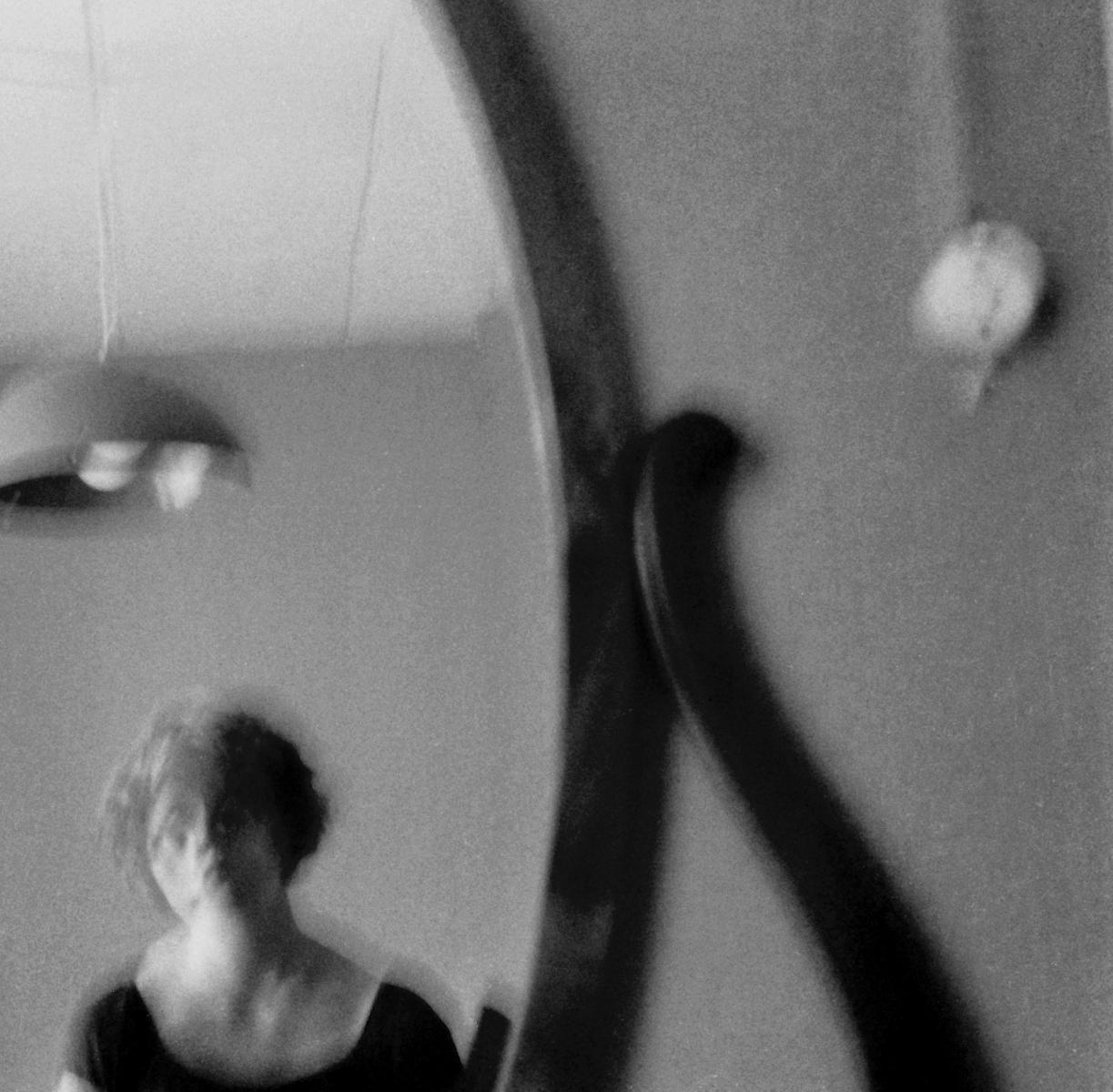
From the Strange Days series

part of the contemporary art. Comparing different techniques, like photography to painting, is pointless.
They are both ways to create visual works, ways of expression. I don't see one being somehow better or
There are stories in my photographs, and I hope the viewers can find them and make their own interpretations. That's how I look at photographs: I start to wonder what is this place or who is this person in the picture? What is the story, what's happening? Or the thing that fascinates me in a photograph can be more abstract: lights, shadows, the atmosphere,... I guess the photograph is meaningless without the viewer.

more important than the other.
I like materials that are easy to work
From the Strange Days series

with. Silicone is versatile and adaptable. It's also comfortable to
wear, even the large earrings that I like don't feel too heavy in use.
From the Strange Days series

Jewellery
future. I like the restrictions usability and materials set for the designer.
designing is something I'm hoping to get to do more in theART Habens Tessa Ojala
I'm very happy that recently my works have been showcased around the world from India to Italy. It's rewarding to think that someone, somewhere, from a different background and culture can find something that fascinates them in my works.
Audience reception isn't something I think that much when I'm doing personal projects, commissioned works are obviously different or if I'm working with a piece that I know is going to be exhibited in a specific place. But personal projects are usually something I want and need to do, even if no-one is ever going to
see them. Making art is a private act, so when you show your works to someone else you reveal something very personal about yourself. It can be unnerving, but it's also very rewarding when you notice your art can cause a reaction in the audience and you get feedback. There have been a couple of projects when I've been wondering if anyone will get what I'm trying to express or if there's a danger I could be misunderstood completely. But playing it too safe isn't interesting, is it?
Thank you, this was fun! The next thing I'm working with is a series of paintings I have been planning for some time now and have started sketching. But it could be that I suddenly get a great idea for a new short film and concentrate on that for a while. Of course I'm always taking photographs too. I don't actually like to plan the future too much, but hopefully it'll be full of interesting and varied projects and opportunities!
An interview by , curator and curator

Lives and works in Ballina, New South Wales, Australia


 An interview by , curator and curator
An interview by , curator and curator

Yes, you raise a good point about the way I’ve come to be a media artist today. I guess the main point to make is that my background, as a scholar at least, is in the interdisciplinary humanities, mainly critical and cultural theory. I didn’t go to art school and I can’t paint or draw! I was trained to think, read and write – but also to do this across domains, which might involve creative expression as much as scholarly writing. The PhD program I attended at Concordia was an interdisciplinary program,
and allowed students to make their enquiry in a range of different “languages.” For instance, I believe one student produced a garden for her PhD. She wrote about it in a scholarly fashion of course, but the garden was the primary expression of her enquiry. I think that background has set me up very well to be a media artist, where my enquiry may well be inspired by, say, deconstructive theory or media archaeology, but it takes the language of media art as its form of expression. So with my interest in archives
Grayson Cookeand the photograph as a memory object, and particularly in the corrosion or destruction of such objects, I suspect I’m still doing deconstruction, just via other means.

Perhaps the other key element of my background aside from my education as a humanities scholar, is that I’ve been a musician all my life. I come from a very musical family, and I played in brass bands, symphony orchestras, choirs and bands for many years. I think that music is my first aesthetic language – and crucially it’s a fairly abstract language, it’s a language of feeling, of affect, and temporal experience. Music unfolds over time – and it asks of the audience that they follow along with this unfolding, that they follow the topography of all this, the dynamism and intensity. I’m interested in unfolding images the way music unfolds.
When I was studying film at university I became obsessed with the films of Andrei Tarkovsky. I guess you have to get obsessed with such films, otherwise you’ll never sit through them – they’re usually three hours long! But they create a kind of contract with the viewer, they suggest that the pleasure of this experience will come from an engagement with each moment as it is presented, with the extension of the moment, the suspension of resolution.


Working with the moving image, particularly during editing, seems like a really appropriate way to bring these elements together; to combine images and sound in a musical way. And so my first real foray into this was to do live audio-visual performance, to edit images in real time, to “play” images the way you play a musical instrument, and to produce images in relation to music, often collaborating with musicians and sound artists in real time such that the image and the sound unfold together. Live a/v performance was a revelation to me, it allowed me to combine musicality and temporality with that immense power of the image to signify, to suggest, to represent.
The practical side of all of this is fairly straightforward. Setup a lightbox, put a photographic slide or negative in a petri dish, get a camera with a macro lens and intervalometer, set it clicking, pour in your acid, and wait for something to happen. It’s the emergent nature of what happens though, where the alchemy of the process lies. Every chemical has its own way of digesting the film, its own periodicity and eventfulness – some chemicals dissolve the gelatin that binds the emulsion together, some chemicals affect just the celluloid, some set loose the dyes in the dye layers, and others just oxidise the silver away. Old Growth comes on the back of a good two or three years of working in the chemistry lab, honing my process and learning more about

the materials; basically, exploring what happens when you submit celluloid acetate film to degradation by strong acids and oxidising agents. This exploration started as a collaboration with my colleague Associate Professor Amanda Reichelt-Brushett, who is an environmental scientist artist. She had been doing these beautiful redox reactions with silver nitrate and copper wire, which grows incredible crystal structures when the copper extracts the silver out of the nitrate. Because of my interest in archival images, I got thidea that perhaps we could do this using film images as a kind of “base” for this type of chemical reaction, so our exploration went from there, trialling interactions between negative film and a whole range of substances: sulphuric, nitric, acetic and hydrochloric acid, sodium hydroxide, sodium hypochlorite, hydrogen peroxide, copper suphate and many others.
So the previous projects after | image and AgX were explorations of this process using my own collection of black and white negatives, a personal archive through which I was able to explore the disappearance of material memory in a very personal sense. Old Growth was a chance to extrapolate out from that essentially, into the dissolution of images of environmental archives. I was interested in the transferability of the affective charge that I discovered when working with the disappearance of personal images: if that experience was shocking in some way for an audience, if they felt that loss of memory, the loss of the personal archive, then how would it feel to watch images of precious and ancient environments, the memory of the earth, disappear as well?



As I mentioned earlier, I see what I do as a media artist as a kind of continuation of my research enquiry through other means. As a scholar publishing in academic journals, at times it can feel as if the audience for your output is fairly small and circumscribed. Translating a research enquiry into an artistic medium and context allows you to reach audiences in all sorts of different ways, and I value that immensely. So I might do live a/v shows in clubtheatres, galleries, outdoor projections, or show work in galleries, museums, universities, film festivals, online etc. Each context invites a different type of audience and nuances the work differently; for instance a festival of science films or environmental films attracts a very different audience from an underground film festival – and the films that constitue the Old Growth project have played in all these different environments. It’s built to translate ideas across domains; it’s scientifically derived, it evinces environmental concerns, it’s frequently very abstract, and it’s clearly also an enquiry into the material qualities of the image. I think it’s important that art can cross domains and communicate something to diverse audiences, especially when it steps out of the controlled space of the gallery.
And because the project’s files are very large in terms of resolution (being timelapse video they’re basically 5K), they’re nicely situated for translation into larger “urban screen” environments, like the 16-screen videowall on my university campus. It’s an incredible piece of infrastructure, and normally, these types of videowalls are only available in commercial spaces like the headquarters of a major bank or som telecommunications company. Being able to produce artistic work for such a piece of infrastructure is a fantastic challenge and also a real opportunity to translate artistic
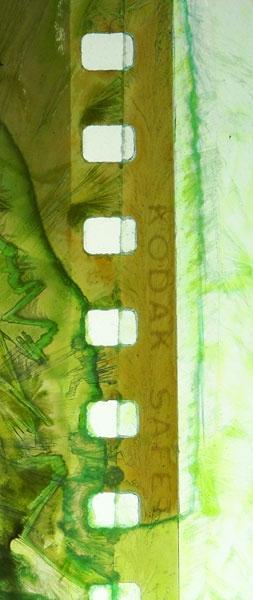
materials into something suitable for display really as a form of architecture.

Certainly new media technologies and the practices that arise around them, are a constant and vital fodder for artists. I have to admit to not being particularly involved with the cutting edge of new technologies in my work though – firstly because I’m not a coder, but also because, as you suggest, innovation always must build on something. And so assessing and re-assessing what already exists, whether we are talking about archaic or contemporary media technologies or the archives of media content that fill the world’s libraries and museums, is where my focus lies. The concept of “remix” is vital I think, and it has manifestations in all sorts of ways, and opens art to a political dimension that it lacks if it doesn’t think about where it comes from.
For example, the act of remixing early film is political in a way that its original production simply wasn’t. Personally, I’ve got a fascination with the Western film genre, which I explored in a previous live performance work with sound artist Mike Cooper clled Outback and Beyond. It’s a really interesting genre, which was traditionally used as a mechanism for constructing and reinforcing national identity, particularly in the United States, but also in other nations
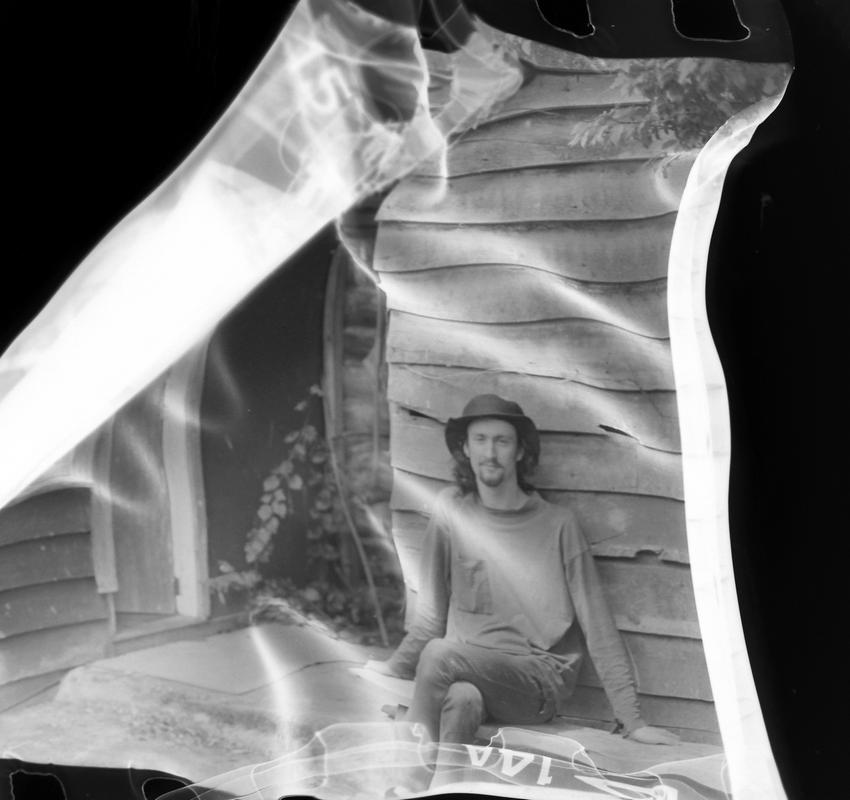



who developed their own traditions d uses for it, such as the Winnetou films from West Germany and the East German DEFA “Indianerfilm”. So because of that historical function of the genre, we can use it today as a method of critiquing national identity formation and mythography, particularly in a post-colonial context. Remixing the Western, through investigating its archival forms and representations, allows us to question and critique the way certain images from the media archive come to define concepts of national character, and bring with them certain ideologies. In thway, we can make actual interventions into the formation of culture, which I think is a vital role for artists today.
Yes, after | image and AgX were both very much experiments in how it feels to watch images disappear, and how this can be understood as a kind of material forgetting. Because I was using images from my collection of negatives produced when I studied photography at high school, the collection was filled with all sorts of random things, my youthful Gothic obsessions and well as images of friends and family. Before I started the process I contacted the friends whose images I was planning on destroying, to let them know that their “images” were about to be part of an experiment and still, it was quite intense to pour sulphuric acid on the photos of my friends! But that was part of the point of it all – that I DID have to contact the feeling of that, of this transduction of the image from memory
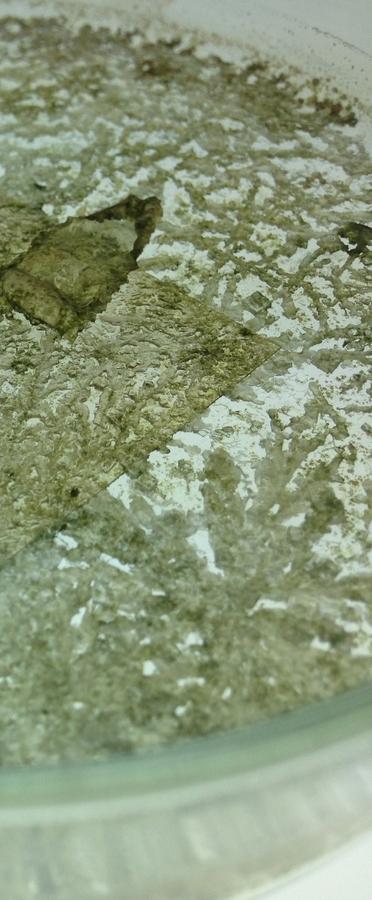
content to memory object and from there to pure material form.
I don’t normally approach my role as an artist in that way, I must admit – as in, as this kind of locus of feeling or a particular biography which is communicated to the audience. I have no interest in that solipsistic cult of the artist that proposes that the artist’s life experience is exemplary and something to mine for broader significance. But because after | image and AgX werusing personal images, it was necessary that I explore the affective experience of the project for me personally as a pathway to making it significant for an audience and to give them entry into the work. And of course the broader significance is that we all have repositories of photos – material memories – as well as other records, that we store and keep around because of their psychological function, the way they prop up our sense of ourselves, of who we are, as individuals with a history. As digital technologies start to shift how we produce and store these material or external memories, it’s worth pausing a moment and asking about what’s happening as we undertake this massive personal and cultural format-shift.
I think that having a background in cal theory means that my orientation as an artist will always be towards art as critique rather than
“l’art pour l’art” or some Greenbergian obsession with the medium as medium. Because being a media theorist, it’s impossible not to be aware that the medium is never neutral, there is always a politics to

the medium because history has a medium; history is always a function of its substrate, of the skin it is burned into. So even thougmy concern may always in part be with the materiality of what I’m working with
– the very chemical construction of photographic film; or the cyan, magenta and yellow dyes that give us colour transparencies – these material phenomena must also be understood culturally, as

phenomena with an economic or political underpinning. The incredible potential of art as a language is precisely its polyvocality, the fact that it makes intellectual, affective and sensuous appeals all at the same time. I think that’s one of the reasons why I’m
interested in the art/science nexus, and using art to comment on something like the environmental crisis we face today, where anthropogenic climate change is one of the biggest challenges facing humanity and the planet. I see it as vital that science is able to

make statements that are unequivocal, or as near to unequivocality as it can get, given the possibility of near consensus within a given scientific community. At the same time though, despite the incredible weight of the agreement of the majority of the scientific

community that global warming is real and that it is caused by human activity, we have large swathes of the community who “believe” that the science is wrong. What is the derivation of this “belief” and how can we address it? My sense is that art, in its capacity to speak persuasively and emotively and sensually, has enormous potential to address the issues that face us today, and to speak to audiences in ways that a factual or univocal address cannot.
Yes, absolutely – the audience is central. Again I think a background in music and film has given me a very strong sense of the trust you have to build with an audience, the sense that there is a contract you must enter into if they are to give you their attention for 5 minutes, 10 minutes, an hour. The audience must be encouraged to come with you at each moment, and so there is always the question of the dramatic arc, the push and pull of intensity, that demonstrates the artist’s care for the audience and their experience.
That’s not to say that shocking or even brutalizing my audience isn’t part of my intention! The ending of the “Bleach“ film in Old Growtfor instance, is extremely painful! We hear this intense cataclysm of sound,
which is actually the sound of an outboard motor recorded underwater by a hydrophone. It’s an absolutely horrible sound, pure noise really, with this weird constantly falling Shepard tone effect, and it just gets louder and louder, and so the sound you hear when it stops suddenly, the absolute cessation of this terrible noise, the beauty of coming back to silence, is almost just as shocking as the sound was.
Even though I’ve been working in this area of archives, memory, and image destruction for some years now, I still feel as if I’m only scratching the surface of what can be done! So for example, my latest project, with collaborator Dea Morgain, is the exhibition project UNSETTLED, which involves images from the State Library of South Australia. One of the things I did in this project was digitize colonial images then transfer them back to film, and put them through my chemical degradation process. The relt is this image that kind of manifests the force of history, the incredible pressure involved in the piling up of the past. So we see Australia’s colonial history melting away, and it asks the question of what we might put in its place, essentially – what other histories the corrosion of colonial history might make way for, and in particular a foregrounding of Australia’s Indigenous histories, which are immense and incredible and which exceed Australia’s colonial history by many orders of magnitude.



